News
Did you now an interactive LEGO brick exhibition has arrived in Perth?
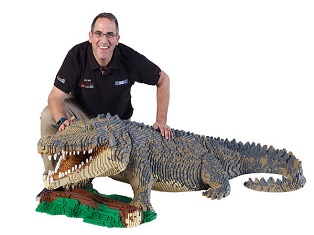
That’s right, Brickman Awesome will be showcasing the tallest LEGO model in the Southern Hemisphere — a NASA SLS rocket, which was constructed using more than 450,000 bricks and measures in at 7.5 metres tall. It took exhibition curator Ryan McNaught more than 500 hours to build the model and it even features a lighting display which creates the illusion that the rocket is blasting off into space.
The exhibition also features a life-sized Toyota Camry, the only life-sized LEGO Harley Davidson motorbike ever built and the world’s largest LEGO Caterpillar 797 dump truck. For the science-fiction fans, there is a life-sized TARDIS from Doctor Who and a light-up Back to the Future DeLorean. A full-sized Australian saltwater crocodile, weighing 60 kilograms and comprising of 40,000 LEGO bricks is also on display. Don’t forget to check out the LEGO Kangaroo, Koala and Orca too!
In total, there will be 38 brand new LEGO models, which have been created using more than 2 million bricks and took the team more than 5000 hours to construct. Ryan McNaughton is the only LEGO Certified Professional in the Southern Hemisphere and one of only 14 in the entire world!
Visitors also have a chance to show off their building skills. There’s the opportunity to help the Brickman team expand their colony of Emperor Penguins. You can also build your own time machine and contribute to Australia’s longest LEGO model, by adding new sections to the snake!
This event is being held at the Perth Convention Centre until July 22.
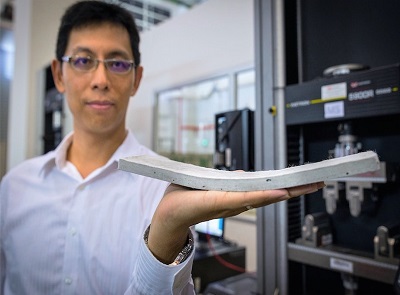
Some highways (and most sidewalks) in the United States are made out of concrete. Mark Weaver, a Professional Engineer in California, writing on website Quora, explains:
“The main reason is that highways have much higher volumes of traffic than surface streets. Highways also have much heavier vehicles traveling on them than surface streets. The combination of higher volumes and higher weights of vehicles causes serious durability issues for asphalt concrete pavement.”
The problem with concrete? It isn’t very flexible. For building roads, the material of choice is usually asphalt due to its flexibility - but concrete is cheaper to install. A lot of other U.S. infrastructure is made with concrete - and it is starting to show its age.
The brittleness of concrete is not one of its favorable attributes, but what if engineers could cheaply install concrete and it could last longer than any rival material?
Bendable concrete would contribute to more stable bridges and it would help prevent them from collapsing. Sometimes it’s not the older bridges that are in trouble of collapsing, but the new ones.
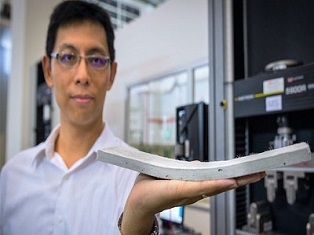
In March 2018, a bridge collapsed at Florida International University in the United States that unfortunately led to loss of life. Engineers had discussed a crack that had formed on the bridge hours before the bridge collapsed. The crack has still not been confirmed as the root cause of the collapse, however, a bendable concrete that could survive more stresses may have prevented a collapse. The bridge is said to have been built via a quicker construction method and utilized a new form of concrete known as ‘self-cleaning concrete’.
Solutions
Engineers at the University of Michigan believe they have the answer to offsetting the brittleness of concrete. Their discovery was inspired by seashells. In their Conversation article, they write:
“To develop ductile concrete, our laboratory borrowed ideas from nacre, also known as mother of pearl - the iridescent material on the inside of abalone shells.”
Mimicking the nanoscale architecture of an abalone shell - which the engineers say looks like a brick wall - makes what seems to be a small shell, quite rigid.
“The ‘bricks’ are thin layers of aragonite platelets, and the ‘mortar’ between them is a natural polymer that is very elastic. The polymer holds the rigid aragonite layers together, but allows them to slip from side to side under stress. This structure makes nacre both strong and flexible.”
Their new concrete has been given a name: Engineered Cementitious Composite (ECC) or strain-hardening cementitious composite. When using tiny fibres within concrete that is under pressure, the composite emulates the flexible rigidness of the nacre.
Scientists in Singapore’s Nanyang Technological University have also been experimenting with putting ‘thin-as-human-hair’ fibres into their mix of concrete. The result? A new material known as ConFlexPave. The distribution of the polymers reportedly makes the concrete stronger and more durable.
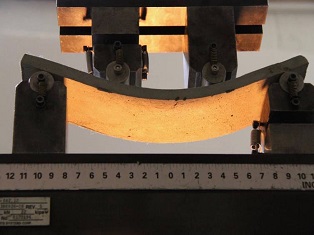
The researchers say instead of pouring the concrete on site, the concrete could be prefabricated at a factory and transported to the construction site and simply laid in place. The engineers will test the concrete around their campus over the next three years.
Professor Yang En-Hua from NTU’s School of Civil and Environmental Engineering, leading the charge on the research said:
“The hard materials give a non-slip surface texture while the microfibres which are thinner than the width of a human hair, distribute the load across the whole slab, resulting in a concrete that is tough as metal and at least twice as strong as conventional concrete under bending.”
Works Cited
Coxworth, Ben. “Next-Gen Concrete Bends Instead of Cracking.” New Atlas - New Technology & Science News, New Atlas, 17 Aug. 2016, newatlas.com/bendable-concrete-sidewalks/44950/.
Li, Victor C. “Bendable Concrete, with a Design Inspired by Seashells, Can Make US Infrastructure Safer and More Durable.” The Conversation, The Conversation, 11 June 2018, theconversation.com/bendable-concrete-with-a-design-inspired-by-seashells-can-make-us-infrastructure-safer-and-more-durable-93621.
Weaver, M. (2018). In the United States, why are most highways made of concrete, while most streets are made of asphalt?. [online] Quora. Available at: https://www.quora.com/In-the-United-States-why-are-most-highways-made-of-concrete-while-most-streets-are-made-of-asphalt [Accessed 11 Jun. 2018].
We had a very good response to the seminar which the Engineering Institute of Technology ran in Midrand, South Africa, on the 19th June.
During the
The theme of the presentation, in a nutshell, was the disruption being caused by the increasingly digital/automated world. The topic may have been confronting
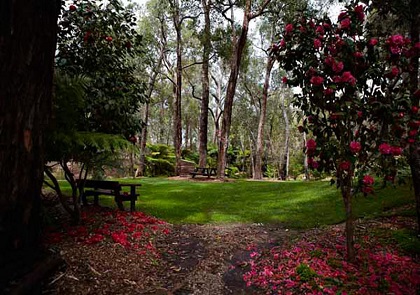
Perth is surrounded by some amazing destinations that are only a couple of hours out of the city. If you’re looking for something to do during your study-break or on the weekend, why not explore some more of Western Australia? Here are some of our favourite day trips.
Araluen Botanic Park
This stunning park is home to 59 hectares of native Australian bushland and 14 hectares of manicured gardens showcasing exotic plants. In the spring, it features more than 100,000 tulips in full bloom against a backdrop of eucalyptus trees. Visitors can take a train ride around the park to take in the scenery and learn about Western Australia’s native flora. Located in Roleystone, it is only 35km south-east of the Perth CBD.
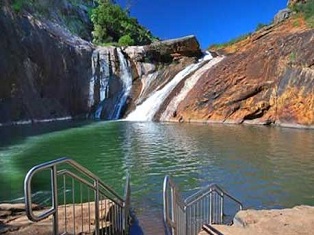
Yanchep
This is the perfect place to spot koalas and kangaroos in their natural environments. There are also a number of walking trails, where you can relax and take in the beautiful scenery. If you’re looking for something a bit more adventurous, why not visit one of the natural caves?
Gnomesville
Thousands of gnomes live amongst some trees on the side of the road, approximately 195km from the Perth CBD. How Gnomesville originally came into existence is still a mystery; however some people believe one gnome was placed there on its own and then others were added to keep it company. Since then it has become an attraction for both tourists and Perth locals, with visitors from all over the world adding to the community.
Serpentine Falls
Best visited in winter, you can watch the water from the Serpentine river cascade down a granite cliff here. Why not pack a picnic and enjoy lunch surrounded by grey kangaroos? There are also a number of hiking trails in the area that can take from 15 minutes to five hours to complete, depending on how far you want to walk. The falls are located in the Serpentine National Park, which is 55km south-east of the Perth CBD.
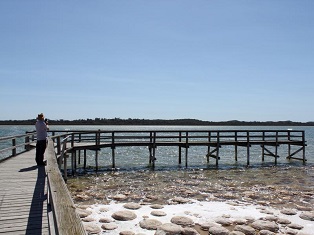
The Pinnacles
Thousands of natural limestone sculptures cover this dessert. Known as the Pinnacles, they can stand up to 5m tall. The best time to visit is at dusk or dawn as the shadows cast by these formations create incredible shapes and patterns across the sand. You might even be lucky enough to spot a wild emu.
Lake Clifton
This lake is home to thousands of thrombolites, which are tiny micro-organisms believed to be some of the earliest life-forms on earth. Follow the boardwalk to get an aerial view of these creatures. They resemble rocks, despite the fact that they’re actually alive. Located in the Peel region, it’s only a short drive from Mandurah and Bunbury if you’d like to continue exploring the state further.

This winter, get your skates on and brave the cold at winter wonderland events in Fremantle and Elizabeth Quay. If you’re not too keen on ice skating, there will be snow-man building, inflatable slides,
food stalls and markets.
Winterworld
This outdoor ice skating rink in Fremantle will be complete with falling snow. There will also be a giant inflatable slide and a snow pit, where you can build your own snowman. If you’re feeling cold, don’t worry — inside the National Hotel is a warm and cosy Cabin Bar. You can relax here with a warm hot chocolate, roast marshmallows around a fire pit, or visit local producers and retailers showcasing their wares at the marketplace. There will also be food trucks serving food, perfect for a cold winter’s day.
Australia’s largest open-air ice skating rink will be open from 23 June – 15 July at the Fremantle Esplanade Park.
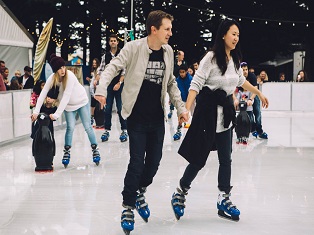
Skating At Festival
This open-air ice skating rink is located in the heart of the city at the picturesque Elizabeth Quay. The pop-up rink is ideal for people of all ages and skating abilities. If you’re looking for a dose of adrenaline, you can race your friends down a slope on a snow tube. There will also be a giant inflatable slide and a bouncy castle, plus food trucks selling snacks and hot drinks.
This attraction will also be open from 23 June – 15 July at Elizabeth Quay.

What modern curriculum vitae should look like is a question that prospective employees are asking themselves all over the world. For those seeking employment in the engineering industries this is a particular challenge because it requires some creative aptitude – not always something that comes naturally to technical gurus.
And yet, fierce competition in the modern workplace means that perfecting a CV and marketing oneself as the best possible candidate is critical, despite being tedious.
Thankfully there are some basics that graduates can apply to their CVs that will help them at least be considered by employers.
Steve Mackay, the Dean at the Engineering Institute of Technology, believes that the rules of CVs have changed. What used to work in the past does not necessarily work today. He said:
“First of all, ensure your CV is designed for the particular job you are applying for. Most people think they can use a generic resume because they have to apply for lots of jobs. This is not advisable. If you feel it is a good fit then use it, but then ensure your cover letter is specific and thorough. Your CV should use plain English and the information should be laid out simply and logically…and leave lots of white space. Grammar and spelling must be one hundred percent accurate. Avoid too much detail; the CV that is 20 pages long is not acceptable. An executive summary at the top of the resume is a good idea. Be specific! Focus on the job you really want. Your CV should also include business strengths and business wins.”

What is available for those needing to build a CV?
On some college campuses students organize events to assist others who aren’t well versed in putting their CVs together.
And services like Microsoft Word and Google Docs, which are often underrated, have templates that people can utilize for their CVs.
The reality is that many people don’t know where to begin, but do engineering professionals have it harder than others when trying to show off their experience?
One engineer has an interesting take on it. When talking to social media site Reddit he showed what he thought the modern resume could look like. He has created an entire website to show off his experience. The site serves as a portfolio of things he has designed, worked on and perfected in the past. It also links to all of his social media, and even his GitHub repository.
Take a look at it: http://julian6alvarez.strikingly.com/
He breaks up his website resume into four sections:
Engineering - Design - Experience - Contact
Evidently he had worked at some cutting-edge aerospace engineering companies; involved in both the design and engineering of many projects.
Back to basics
Nonetheless, there are many companies that prefer the no-frills approach to CV submissions. Unless otherwise asked, send the company an age-old, basic CV. Consider the following table of ‘Dos and Don’ts’. It is from an assortment of engineering experts on creating effective CVs.
|
Do |
Don't |
|
Leave white space. Make it easy on the eye. Presentation is everything. |
Use weird and wonderful fonts. Avoid hand writing at all costs. |
|
Keep it succinct. NO PARAGRAPHS. |
Add unnecessary images. |
|
Double check your grammar. |
Add outdated skills. |
|
List all relevant experience. |
Use slang or colloquial language. |
|
Tweak your CV based on which employer you are applying to. |
State your salary expectations. |
|
Refer to most relevant, important skills. Put them closest to the top. |
Make your CV longer than two pages. |
|
Investigate which keywords to include in the CV. |
Add information that you cannot verify. |
|
Add major achievements. |
Add unnecessary personal information. |
|
Save the resume in multiple formats. |
Deviate from a neat and tidy format. |
Works Cited
Bloomfield, Georgina. “How to Write the Best Engineering CV There Is.” Engineering & Technology Jobs, Engineering & Technology Jobs, 20 Apr. 2017, engineering-jobs.theiet.org/article/how-to-write-the-best-engineering-cv-there-is/?utm_source=Adestra&utm_campaign=Jobseekers Non Members 05/06/2018&utm_medium=Advertising - Recruitment E&T Jobs&utm_content=E&Tj Job Seekers campaigns&utm_term=https://engineering-jobs.theiet.org/article/how-to-write-the-best-engineering-cv-there-is/.
“Do's and Don'ts for Developing a CV | Independent Jobs.” The Independent, Independent Digital News and Media, independentjobs.independent.co.uk/article/do-s-and-don-ts-for-developing-a-cv/.

Can leadership be inherited? Can leadership be learned?
In a study published in 2013 by Science Direct, the answer to both those questions is ‘yes’ - but learning how to lead significantly outweighs the likelihood of the former working without some input. The researchers of the paper entitled, Born to lead? A twin design and genetic association study of leadership role occupancy, believe that inheritance contributes little to leadership qualities:
“Employing twin design methods on data from the National Longitudinal Study of Adolescent Health, we estimate the heritability of leadership role occupancy at 24%”
The study would go down as the only study to ever use genotypes to determine whether or not humans could inherently be born with a leadership gene. The result was that leadership is more easily taught than inherited.
In engineering the likelihood of being thrust into a position that involves having to manage a team is high. So those new to leadership may find solace in the fact that it can be taught.
This is indeed heartening when one considers that engineering projects do fail when the teams involved are not managed ably.
A prominent clinical psychologist from the University of Toronto, Jordan Peterson, has been delivering presentations based on his new book, 12 Rules for Life. Talking to SpeakerSpotlights about management and leadership, Peterson suggests that those in charge must encourage their team members to take control of their lives and strive towards achieving their goals. He explained:
“If you have a vision for the direction of your life, and your job is serving that purpose, then instantly your job becomes motivating. People are motivated when they are undertaking an act that is associated with a goal that they desire.”
He also emphasizes the need for a positive atmosphere within a team as it will result in a unified group who work actively to achieving the same goal or project outcomes.
Become a leader
Elizabeth Powitzky, a writer for the Forbes Financial Council, has penned her responses to the study by Science Direct; she has come up with six strategies that could turn a manager into a leader:
1. Identify gaps and strengths. To be a truly effective leader, figure out what’s hindering or helping you, and then take action.
2. Surround yourself with diverse thinkers. Leaders constantly confront difficult problems and no one person typically has the answer. It is important to seek out people who think differently from you -- and from one another.
3. Understand that words matter. People often dissect a leader’s words, looking for nuance and hidden meaning. Think carefully about what you’re saying and how it’s being perceived.
4. Question and test decisions thoroughly. Imagine explaining each one to a client, your team, or other leaders in your organization.
5. Observe others and keep growing. You have to be a lifelong learner in all aspects of life, but particularly if you want to grow as a leader. Study critically what others say and do.
6. Seek feedback and act on it. Ask others to share their perceptions of you and how they would describe you to others.
The Engineering Institute of Technology (EIT) has a Diploma of Leadership and Management and a Professional Certificate of Competency in Project Management for Engineers & Technicians. These courses offer the kind of training that familiarizes students with ‘people skills’ and teaches a range of skills including scheduling, cost control and risk management.
Drawing on his years in engineering, the Dean of Engineering at EIT, Steve Mackay, has articulated his thoughts on dealing with conflict in engineering teams. He believes a manager who is able to diffuse difficult situations makes a good leader. Consider his ideas in the following:
Works Cited
“Born to Lead? A Twin Design and Genetic Association Study of Leadership Role Occupancy.” Egyptian Journal of Medical Human Genetics, Elsevier, 10 Sept. 2012, www.sciencedirect.com/science/article/pii/S1048984312000811?via=ihub.
Powitzky, Elizabeth. “Great Leaders Are Made, Not Born: Six Strategies For Becoming A Better Leader.” Forbes, Forbes Magazine, 25 May 2018, www.forbes.com/sites/forbesfinancecouncil/2018/05/25/great-leaders-are-made-not-born-six-strategies-for-becoming-a-better-leader/2/#35abb68d25d2.
speakersspotlight. “On Leadership and Direction | Dr. Jordan Peterson.” YouTube, YouTube, 8 Aug. 2017, www.youtube.com/watch?v=I_wVDdJ0JQk.

110,000 Australian homes are to be powered by renewable energy sources before the end of 2018. Much of this is thanks to Partners Group - the global private market investment manager. They will be investing a total of AUD$700 million in a renewable energy platform named the Grassroots Renewable Energy Platform.
The investment will, over four years, help add 1.3GW of new wind power, solar power, and battery storage projects in Australia. It is not the first time Partners Group has thrown their weight behind the Australian renewables sector. In 2015, they pledged AUD$450 million for the building of the Ararat Wind Farm in Victoria. The local developer utilizing the funds and building the farms is CWP Renewables. They are in the business of delivering energy, and powering communities.
Then in 2016, the investment firm pumped a further AUD$250 million to complete the 270MW Sapphire Wind Farm in New South Wales. This particular wind farm is going to be the most important player in the new Grassroots Renewable Energy Platform the company plans to perfect in Australia. It is thought that the wind farm would be paired up with an upcoming solar and battery storage project.

This cash injection is changing the face of power generation in Australia. The Head of Private Infrastructure Asia-Pacific at Partners Group Benjamin Haan said:
“When we invested in Sapphire Wind Farm, one of the key attractions for us was the project’s potential to anchor an Australian renewable energy platform. Partners Group and CWP have a project in the pipeline of 1.3GW in generation capacity across wind and solar power, offering the scope to be selective and develop Grassroots into a quality renewables platform of significant scale. We look forward to working with the CWP team to further support the generation of clean energy in Australia.”
CWP boss, Alex Hewitt, believes that the platform will undeniably help Australia transition from a fossil-fueled electricity industry to one powered by renewables at ‘very affordable prices’. An added benefit of bringing the wind farms online will be a marked decrease in carbon emissions.
Not stopping there
An extra 55,000 homes will be getting clean power in 2019 when the second project, the Crudine Ridge Wind Farm, is completed. That farm will produce 135MW in Mudgee, New South Wales. And of course power isn’t the only thing being generated – jobs are too. By September of next year the General Electric wind turbines will be erected, producing 75 full time jobs.
Partners Group adds that over its lifetime, the Crudine Ridge Wind Farm, will offset eight million tonnes of carbon emissions.
And if all goes well, with continued innovation in renewables, the Grassroots platform could indeed become an Australian clean energy superpower. Talking to Clean Technica, Haan concluded:
“In Australia’s energy market, a significant transition away from fossil-fuel power is now underway. The compelling economics of renewables and the age of older coal plants is driving that change, the speed of which is ramping up. While it is true that political instability has delayed the transition in the past and the sector is still somewhat fragmented, the Grassroots platform is aimed at this transition and its business plan is robust enough to deal with any likely outcomes from the current political debate. We believe Grassroots has the scale and competitive edge to succeed and become a significant renewable IPP in Australia.”
Works Cited
“Partners Group to Invest AUD 700 Million in Australian Renewable Energy Platform; Announces Imminent Construction of Crudine Ridge Wind Farm.” Private Investors, www.partnersgroup.com/en/news-views/investment-news/current/detail/article/partners-group-to-invest-aud-700-million-in-australian-renewable-energy-platform-announces-imminent-construction-of-crudine-ridge-wind-farm/.
“Swiss Equity Firm Commits To 1.3 Gigawatt Australian Renewable Energy Platform.” CleanTechnica, 29 May 2018, cleantechnica.com/2018/05/29/swiss-equity-firm-commits-to-1-3-gigawatt-australian-renewable-energy-platform/.
Paul Celenza is the College Manager at the Engineering Institute of Technology (EIT); he has worked for the college for eight years. Upon a recent visit to South Africa, Paul reflected on eight years of change and innovation in the education sector and revealed more about EIT’s novel approach to the future of engineering education and training
EIT’s sister company, IDC Technologies, began offering courses to students over 25 years ago; short engineering professional development courses, on site and in classrooms around the world – a branch of the business which still exists today.
With the reach of the internet and emerging online technologies EIT began offering these short certificate courses online. The platform is live and interactive and provides students, in all corners of the world, with access to engineering and technical training. The college also now awards Australian qualifications in a range of diplomas, advanced diplomas, BSc and Master degrees for those in, or heading into, the technology and engineering industries.
These qualifications have been designed by EIT with teams from industry, to ensure the content is relevant and driven by the demands in industry. Celenza says the college has been able to nimbly adjust its offerings to keep up with the changing nature of technology:
“Traditional engineering is morphing. Some positions in industry are becoming more niched, whereas others require a range of engineering disciplines. The education behind these professions needs to change as the technology changes.”

For example one of the college’s signature degrees is the Bachelor of Science in Industrial Automation Engineering. Apart from covering the specific technologies relating to it, it incorporates mechanical and electrical engineering; it provides students with the requisite skills for a profession which is critical to the fourth industrial revolution.
Celenza commented further:
“The whole world is talking about STEM - we want to facilitate student careers in technology and engineering across the globe.”
EIT already reaches students in over 140 countries, but felt a campus would benefit school leavers. To this end the first EIT campus opened in Perth, Western Australia in February this year. Students passionate about engineering and technology, from Australia and abroad are being welcomed. The on campus learning is blended, using EIT’s local and international lecturers; academics and engineering experts from industry.
The Commonwealth Register of Institutions and Courses for Overseas Students (CRICOS) makes the process of bringing students into Australia possible. Higher education institutions and their unique course are listed in the register, and international students are encouraged to apply. Celenza said:
“Our first intake has been small, which is good – we have learned much from this band of learners; they have encouraged us to expand in Perth and open others in Australia and abroad. With all that EIT offers, we are really building the hybrid college of the future.”
Paul spearheads the recruitment of students in the VET (Vocational Education and Training) sector of EIT - where all training is delivered online. This option to study online, for those working full time and with family commitments, is a massive advantage to students. The need to do further study has become increasingly important in our fast-paced world and the online platform of learning is the facilitator.
In the VET courses and higher education degrees EIT ensures all content is designed with the demands of the workplace in mind and it is continuously improved. Celenza explains:
“Universities, with mammoth campuses, often teach obsolete skills to students. They graduate with little or no practical work experience; it becomes lost in the academic world. Students with access to hands-on experience which is underpinned by technology translates into more valuable, employable workers.”
EIT, Celenza says, is consolidating and improving all of the technological requirements of a modern day education and training institution. They are providing their students with remote labs that can be accessed from all over the world and creating virtual simulation canvasses for students to experiment on.

Furthermore, the institution is utilizing a new, novel, cloud-based approach to student management. Celenza’s recent trip to South Africa, from EIT’s Australian head office was motivated by this. He was tasked with guiding the institutions’ Learning Support Officers (LSOs) through the technological processes of upgrading their student management framework.
EIT, on the road to 2020, is in a consolidation phase of strengthening their offerings in both the VET and higher education sectors - steadily building the foundation of future learning so that they can be the futuristic institution that modern day students are seeking.
Paul notes that as a College Manager he comes into contact with EIT students from many cultures, from all over the world. He admits proudly that he provides support to many of these learners who are determined to improve their employability and their lives through gaining qualifications via a globally relevant institution.
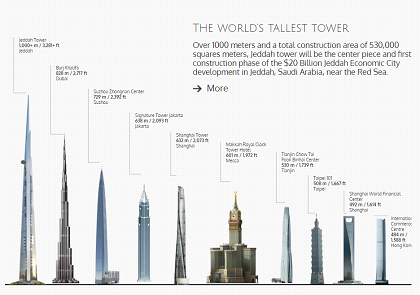
The world’s tallest building, the Burj Khalifa in Dubai, is about to be dethroned. 1,200 miles away, a new tower is nearing its completion in Saudi Arabia. In 2020, the tallest building in the world, the Jeddah Tower measuring in at one kilometer, will open. That is if engineers can complete the audacious towering skyscraper on the desert sand.
The tower’s construction is estimated to cost the Kingdom Holding Company around US$1.5 billion. Jeddah Economic Company website initially reported that the tower would stretch “over 1000 meters” but Engineering360 says those plans have changed. Nonetheless, the tower will also have the world’s highest observatory deck ever built.
The tower will also be the centerpiece of an almost Singaporean city, a center for business and commerce. This city will be called the Jeddah Economic City. The entire district is to cost US$20 billion. It will include a new airport and cutting-edge infrastructure, replacing the dated and aging infrastructure Saudi Arabia has become synonymous for.
Building on sand
Whilst building a kilometer high building is obviously an engineering challenge, another engineering conundrum is how to build on the fine sand in Saudi Arabia. Civil engineers have had to closely study the 5 subsurface layers of the sand in Jeddah.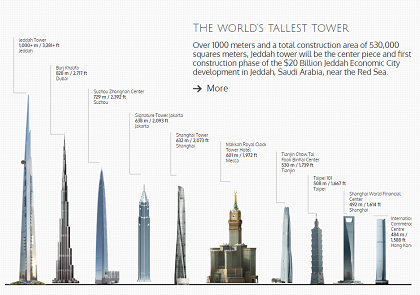
Geographically the tower is near the Red Sea.
Roger Pink from IEEE Global Spec’s Engineering360 explains:
“The first layer, varying from half a meter to 2 meters thick consists of silty sand. The next 40 to 50 meters is coralline limestone, followed by a 2 to 10-meter thick mudstone/gravel layer. Next comes a poorly constituted sandstone layer about 35 to 50 meters thick, followed by another 3 to 9-meter gravel layer. Finally, below all of this is a sandstone layer as far as 200 meters.”
The unique challenges have been figuring out how to utilize the architecture blueprints and build sturdily according to those designs. The architect for the project is American born Adrian D. Smith - coincidentally the architect behind the Burj Khalifa in Dubai. He is also responsible for the Trump International Hotel & Tower in Chicago, the Jin Mao Tower in Shanghai and the Zifeng Tower in Nanjing.
The engineers have created a three-winged load-bearing design. This design also has to account for wind and the pressures that it brings. The project began construction in 2013, but a series of delays has led to the most recent end-goal which is 2020.
One of the delays arose because of the height of the Jeddah Tower. Civil engineering experts advised the architects that the higher up they go, the more unstable the concrete becomes. That high up, the wind load would cause the concrete to shrink under the pressure. (This has also meant the construction has had to be as aerodynamic as possible.)
Specialized concrete pumping equipment with thin, pressurized pipes is being utilized to counteract the forces of gravity on the concrete. Pumping wet concrete a mile in the sky is allegedly the most challenging element of the construction.
The engineers have had to work later in the evenings at lower temperatures. This allows the concrete - being pushed out a single tube - to set. However, concrete is not the only thing that needs particular attention - transporting humans to the top of the tower will be a challenge too.
Bart Leclercq, head of structures for WSP Middle East, explains:
“You have to make sure a tower is not too flexible and people aren’t getting nauseous in high winds. You have to put enough stiffening elements in your building. For example, sheer walls in combination with concrete cores in the case of a concrete building.”
A novel approach to an elevator system is being drawn up to ensure the elevators do not suffer under the wind loads and the building sway. The tower is expected to have a wholly different elevator system - the first of its kind in the world.
The engineering challenges and the feasibility of a mile-high tower have meant that the architect’s original plans have, in some instances, changed to accommodate the actual construction of the tower.
Hisham Jomah, chief development officer at JEC, told the Times of Oman:
“Between theory and application: what has been designed and what is actually on site is quite another world.”
This year, over 50 percent of the construction is reportedly completed. Here is a video of the progress made on the tower in the first half of 2018:
To see how six cranes will contribute to the construction of the Kingdom Tower Jeddah, take a look at this construction simulation:
The entire project is a marvel of engineering from construction phase to completion. And as far as tall buildings go, in 2020 this tower will have reset the bar. It does, however, make one wonder at the significance of it all?
Works Cited
“Home Page.” Times of Oman, NEWSPAPER_NAME, timesofoman.com/.
Pink, Roger. “Jeddah Tower - Building a Skyscraper on Sand.” A Water Treatment Alternative to Chlorine? | Engineering360, insights.globalspec.com/article/8791/jeddah-tower-building-a-skyscraper-on-sand.
_TWIITERID. “Jeddah Economic Company | Home.” Http://Www.jec.sa//, www.jec.sa/.
Ephgrave, Oliver. “Tall Order.” ConsrtuctionWeekOnline.com, www.constructionweekonline.com/article-13533-tall-order/.
A startup in Melbourne, Australia, has introduced the world’s biggest 3D printer. The company in question is
They boast that they also have the industry’s fastest metal 3D printing production line.
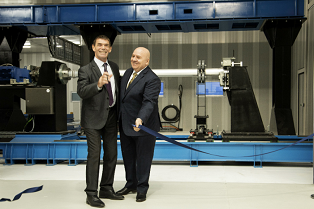
They specialize in titanium, of course. They print for an assortment of industries. They produce and manufacture metals for space ships, automobiles, skyscrapers, bicycles, military marine vessels, yachts, wheelchairs, mining equipment, and offshore oil and gas drilling stations.
Their 3D printer stands at 1.5 meters high, has an area of 9 meters and is 3 meters wide. The 3D printer can produce 45kg (99lb) of printed material per hour. Smaller machines, CEO Jeff Lang says, can only do 1kg (2.2lb) per 24 hours. The size and efficiency of Titomic’s machine
CEO of
The printer has a printing function the company has dubbed
In short, the process uses kinetic fusion instead of melting metals to build.
The company has begun utilizing their new fusion methods to create seamless titanium bicycle frames. They produce a new bike every 30 minutes with a smaller machine utilizing the same fusion methods the larger 3D printer employs.
The process was created in collaboration with the Australian federal scientific research agency CSIRO. Business Insider reports that the previous title owner of ‘biggest 3D printer’ was GE’s machine - which could print metal objects of up to one cubic meter.
Here is a timelapse of Titomic’s machine printing a sign in four minutes:
Why titanium?
The benefit for bikers is immediately apparent. Titanium bike frames are more durable than those made from carbon fibre. The golf club company, Callaway, is also very interested in this very capable printer.
However, titanium isn’t the only metal the company is looking to use.
CEO of
“When we look at carbon fibre parts they generally make a hollow part called a monocoque construction. We’re sort of at the stage now where we can achieve that with metal,
Lang believes that their printer signals the birth of a new industry for metal manufacturing. He says now, with
The printer, Lang says, is creating titanium at a level that is “very close” to the strength of titanium when created using traditional methods - but concedes that more can be done to improve its printing methods. The printer has shown how efficient the process of additive manufacturing
Works Cited
Farquhar, Peter. “A Melbourne Manufacturer Just Fired up the World's Largest 3D Metal Printer.” Business Insider Australia, Business Insider Australia, 16 May 2018, www.businessinsider.com.au/a-melbourne-manufacturer-just-fired-up-the-worlds-largest-3d-metal-printer-2018-5.
Quick, Darren. “World's Largest Metal 3D-Printer Scales up Additive Manufacturing.” New Atlas - New Technology & Science News, New Atlas, 18 May 2018, newatlas.com/titomic-worlds-largest-metal-3d-printer/54667/.
If you aren’t utilizing a service that delivers your groceries to your door now, you most likely will use one in the future. Thanks to automation, you won’t have to cast your mind to the nonexistent workers that are packaging all of your groceries up for you - because all of the workers will be robots.

If it sounds like a persuasive brochure from a futuristic sci-fi novel, it isn’t. It’s already happening. Ocado warehouse in Hampshire, England, utilizes hundreds of robots on a metal grid, speedily transferring groceries from holding cell to packet to your front door. And we have engineers to thank for that.
The warehouse where the robots perform their gymnastics is completely unmanned. Pick-and-place robots are abundant, carefully lifting and then putting down items that will be shipped to the demanding customer.
It is all made possible through an automated solution named the Ocado Smart Platform Automated Fulfilment Solution. The graphical representation of what is going on in the computers’ brains as it fulfills an order looks like this:
The whole robotic ‘ecosystem’ is orchestrated through a 4G-based wireless protocol system that is running the whole system in real-time and can optimize the operation on-the-fly. The company says the system is the most advanced system for logistics in the world.
Thousands of little specks on a digitized warehouse blueprint map show what the robots see - items ready to be fetched and delivered. It is called a resource map.
440 other specks (the robots) then need to travel into the interior of the warehouse and pick the items up. The 4G network makes the magic happen - it communicates at 10 interactions per second with each robot.
The robots need to know where to be at the appropriate time. The system can handle 3 million routing calculations per second. Something that quantum computing, upon its arrival, will more than quadruple. It is an ecosystem of robotic automation, working in complete harmony - something human workforces are hard pressed to perfect.
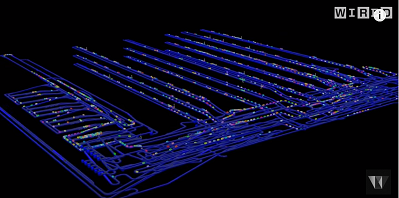
source:wired
Talking about efficiency, the grid that Ocado has designed ensures that all possible warehouse floor space is utilized so that there is no wasting of resources whatsoever. The company says that the grid can be retrofitted into existing warehouses.
The robots themselves can carry tens of kilograms and can move at several meters per second - there is no doubt that the robots are efficient. They are so efficient they have dubbed their robot battalion a ‘swarm’ of robots. Traversing a grid the size of several football fields, the robots communicate via a cloud-based solution and continually generate data that gets plugged into an analytics program named BigQuery.
It is a data and communications tour de force. Experts say the data communications network the company is running is the first of its kind and is the ‘first deployment of unlicensed 4G spectrum for warehouse automation’. The warehouse can handle up to 1,100 robots.
Thus, it is a glimpse of the not too distant future for all warehouses.
However, Ocado isn’t the only company utilizing robots in warehouses. Amazon has a staggering 45,000 robots currently whizzing around in 20 fulfillment centers - grabbing the relevant items customers have ordered, and transporting it to the delivery departments. From 2016 to 2017, they doubled the number of robots that was working for them. Amazon purchased the robot company Kiva Systems in 2012, and has been using warehouse robots ever since.
It is no secret, automation is replacing the pick-and-place workers in warehouses. What has been kept secret are the incredible data communications systems in place to ensure the most efficiency for a warehouse. Companies are looking to automate more efficiently than the next company, and it seems Ocado - with their own novel software and systems - is pulling ahead.
Works Cited
“Ocado's Robot Swarm.” New Electronics, 23 May 2018, www.newelectronics.co.uk/electronics-news/ocados-robot-swarm/174218/.
Shead, Sam. “Amazon Now Has 45,000 Robots in Its Warehouses.” Business Insider, Business Insider, 3 Jan. 2017, uk.businessinsider.com/amazons-robot-army-has-grown-by-50-2017-1?IR=T.
Food and beverage processing has been achieved by
With the rise of
Fast food giant,
Four MIT engineering graduates have gone into the restaurant business and shown the world the future with their automated kitchen. It is the brainchild of Michael Farid, who during his Masters in Mechanical Engineering, found that he had almost no time to cook himself meals.

He recruited Braden Knight, Luke Schlueter and Kale Rogers to acquire the technology they would need for the project of creating an automated kitchen. They, too, agreed that they couldn’t find a decent meal at an affordable price point as students. They subsequently began their work on the restaurant of the future. ‘’
In 2015, they took their idea to MIT’s Global Founders’ Skills Accelerator program. They had officially become a startup. They gave the restaurant they would open a name: Spyce.
When they had all the robotics figured out, they had to get a menu going. Therefore, they brought in a gentleman named Daniel Boulud, a Culinary Director and Michelin-Star Chef. Michael Farid guessed Boulud’s email address and asked if he wouldn’t mind creating a menu for their automated kitchen. Boulund says the robotic kitchen brings ‘precision’ and ‘consistency’ to the kitchen - something which humans struggle with.
They eventually opened the restaurant in downtown Boston on May 3rd, 2018. What’s on the menu? An assortment of stir-frys. So how does the restaurant work?
Customers are ushered in by a host. Food is ordered via an automated kiosk. The automated kitchen then gets to work after which the
Every bowl costs US$7.50. Patrons can opt to add proteins for an extra cost.
The
To see how it all came together, check this video out:
The replacement of human workers in the food industry is already causing some consternation in the industry. Members of Las Vegas’ Culinary Workers Union recently went on strike to force employers to amend their contracts to protect their jobs from being replaced by automated technologies.
But Luke Schlueter, the head mechanical engineer on the project, has made assurances that only one or two processes have been automated in their kitchen and that humans are still as vital as ever. He said:
“Our robotic kitchen was designed to be a tool. At our restaurant, our robotic kitchen allows our managers to focus on making our bowls look beautiful, applying the finishing touches, and being creative. We also have a commissary team that preps our ingredients for the robotic kitchen. We’ve designed the robotic kitchen to work in harmony with
Works Cited
Coxworth, Ben. “Restaurant Keeps Its Prices down – with a Robotic Kitchen.” New Atlas - New Technology & Science News, New Atlas, 29 May 2018, newatlas.com/spyce-restaurant-robotic-kitchen/54818/.
“Las Vegas Food Service Workers Are Going on Strike so They Don't Lose Their Jobs to Robots.” Futurism, Futurism, 29 May 2018, futurism.com/las-vegas-food-service-workers-strike-automation/.
“Spyce Restaurant Opens with Robotic Kitchen Ready to Serve.” Should the Federal Government Raise the Minimum Wage to $15? - MIT Sloan School of Management, mitsloan.mit.edu/newsroom/articles/spyce-restaurant-opens-with-robotic-kitchen-ready-to-serve/.
Ahead of the International Conference on Robotics and Automation in Brisbane, Australia, a group of engineers from the University of Washington have announced something that might have tongues wagging at the conference.
They are releasing a study they have conducted that will show the feasibility of wireless, flying, robot insects.
Looking like something out of the film ‘Eye in the Sky’ the engineers have created the world’s first wireless flying robot insect. The engineers have said this is “one small flap for a robot” and “one giant leap for robot-kind”.
The video they have released shows the robot flapping its wings quicker than the eye can see. When slowed down, the robot’s wings look eerily similar to that of a fly’s wings. And have aptly dubbed the robot, ‘RoboFly’.
How it flies
The methodology behind how it flies (how it is powered) is impressive. The engineers have devised a scheme whereby a laser beam is pointed at a photovoltaic cell positioned on the fly’s back.
The assistant professor who co-authored the study, Sawyer Fuller, works in the University of Washington’s Department of Mechanical Engineering. He said:
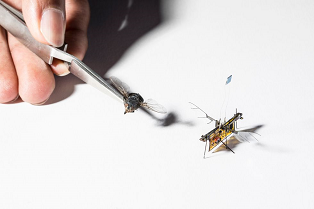
“Before now, the concept of wireless insect-sized flying robots was science fiction. Would we ever be able to make them work without needing a wire? Our new wireless RoboFly shows they’re much closer to real life.”
Enlisting the expertise of the Electrical Engineering department at UW, the robot utilizes a specially designed circuit that takes the current being produced by the laser beam and the photovoltaic
Johannes James, the lead author, explains how the wings use all of the produced energy:
“To make the wings flap forward swiftly, it sends a series of pulses in rapid succession and then slows the pulsing down as you get near the top of the wave. And then it does this in reverse to make the wings flap smoothly in the other direction.”
Refining how the fly uses its wings will be the main focus going forward. Because of its size, the robot is unable to use any other method of levitating - the wings are its only low-weight solution. Nonetheless, the progress that the University of Washington’s engineers
“You could buy a suitcase of them, open it up, and they would fly around your building looking for plumes of gas coming out of leaky pipes. This is inspired by real flies, which are really good at flying around looking for smelly things. So we think this is a good application for our RoboFly.”
Developing these kinds of robots is important
Works Cited
Grossman, David. “Watch a Laser-Powered Robotic Fly Take Its First Flight.” Popular Mechanics, Popular Mechanics, 16 May 2018, www.popularmechanics.com/technology/robots/a20717355/robotic-laser-fly/.
“Wireless Robot Fly Undertakes First Independent Flight.” Interesting Engineering, 17 May 2018, interestingengineering.com/wireless-robot-fly-undertakes-first-independent-flight.
If you start an engineering company today a lot of your operations - both on-site and at the enterprise levels of your business - are vulnerable to being hacked. This is due to the number of technologies which are connected to a cloud-based or internet-connected framework.
The infrastructural technologies of the world are not the only entities under attack - the data the technologies generate and the general data that

The topic of data protection became compelling when companies like Facebook - who have the data of more than 1 billion people - allowed data to be sold to bidders. The issue, therefore, needs to be two-pronged; companies need to establish an ethical approach to handling data and a new band of engineers, the data protection engineers, need to carefully secure data so that it cannot be stolen.
Protecting individuals
Whilst complex security solutions for utility-scale technologies are designed and implemented, individual data - that we humans freely give to every new app that emerges - is undergoing new levels of protection.
You may have received an onslaught of emails recently from the services you have signed your data away to. This would have been due to the European Union’s new General Data Protection Regulations (GDPR). And whilst it may seem that only Facebook and Twitter need comply with the regulations, the company you work
The regulations insist companies have clarity on the location of their stored data and who has access to it. The personal data of individuals within companies has to be adequately protected unless they want to risk being fined by the relevant authorities.
Companies doing business with clients and customers in the European Union need to, as PricewaterhouseCoopers puts it, “make changes to their data privacy, technology and oversight processes”.
Similarly, those investing in a company need to be protected.

Under the new regulations, individuals may ask a company to remove any of their details from databases unless their details are legally required.
If a cyber-attack occurs, and data is compromised, a company must alert authorities within 72 hours.
The new regulations essentially ensure a client’s right to be forgotten when they cease being a client. The party involved can contact the company and ensure that all traces of their data are eradicated from all servers the company has.
Non-compliance could lead to fines of up to 4% of a company’s annual worldwide revenue. PwC reports that in the United States, 3 in 4 companies will invest up to US$1 million in an effort to be GDPR compliant.
Companies who believe they already have a reasonable level of protection for the personal data of their staff and clients can rest easy for now.
Works Cited
Nadeau, Michael. “What Is the GDPR, Its Requirements and Deadlines?” CSO Online, InfoWorld, 23 Apr. 2018, www.csoonline.com/article/3202771/data-protection/general-data-protection-regulation-gdpr-requirements-deadlines-and-facts.html?page=2.
PricewaterhouseCoopers. “SA Companies Doing Business with EU Customers Need to Consider Making Changes to Their Data Privacy.” PwC, www.pwc.co.za/en/press-room/sa-companies-
While Perth is known for its beaches, wildlife and hiking trails, the cold and wet weather doesn’t always make these activities seem so appealing. So, we’ve come up with a list of things to do which will keep you warm and dry this winter.
AQWA

The Aquarium of Western Australia is passionate about generating respect for marine life through their education programs, rehabilitation of sick and injured animals and conservation efforts. Their exhibits feature marine life from five different zones: the great southern, shipwreck coast, Perth coast, the far north and the danger zone. These include one of the world’s largest living coral reefs, fish, sharks, rays and turtles. It also features Australia’s largest walk-through aquarium tunnel.
There are a number of experiences on offer at AQWA as well. These include diving, snorkelling and behind the scenes tours.
AQWA is located at Hillarys Boat Harbour, approximately 20 minutes north of the Perth CBD.
Perth Mint
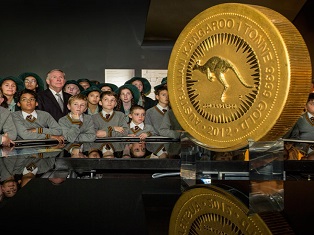
The Perth Mint was opened in 1899 in response to the discovery of gold deposits in Kalgoorlie and Coolgardie. It was used for gold refining up until
The Gold Exhibition tells the story of the search for gold in Western Australia through a series of photographs, artefacts, multimedia presentations and gold mining legends. Meanwhile, you can also watch a traditional gold pour in the original 1899 melting house, during which the molten gold transforms into a solid bar.
Another major attraction is the Guinness World Record-holding Australian Kangaroo One Tonne Gold Coin. This is the world’s largest and most valuable coin, made out of 99.99% pure gold and measuring 80 cm wide by 13 cm deep.
Girls School Cinema
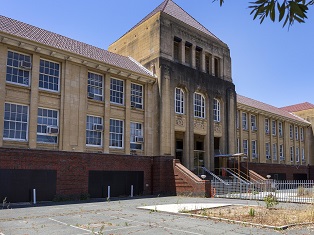
The people behind Fringe Festival and Rooftop Movies are opening a new pop-up cinema this winter, and it will be showing a combination of blockbuster, classic and arthouse films. Located in one of Perth’s most beautiful buildings atop the highest part of East Perth, it was formerly a girl’s school and police station. The castle-like structure is iconic for its Egyptian Art-Deco grandeur.
Just like at Rooftop Movies there will be plenty of food trucks, this time offering up foods perfect for winter including toasties, soups and popcorn.
The Swan River Colony was settled in 1829, and in its first 60 years Western Australia made little progress. In 1881 the state had a population of less than 30,000 people, however by 1911 the
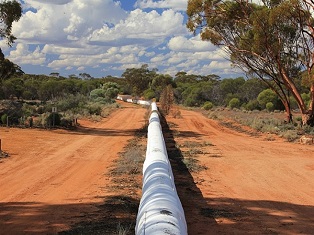
population had grown to 282,000. This was a result of the gold mining in the eastern “desert” from 1893, which drew people from across Australia and the rest of the world. The scarcity of water in the Goldfields area caused many deaths and the rapid spread of disease, so the government decided they needed to implement a scheme to address this problem.
Western Australia’s Engineer-in-Chief C. Y. O’Connor proposed the construction of a 30 metre high dam, 521 kilometres of steel pipeline and 8 steam-driven pump stations with associated reservoirs. He was met with criticism due to the cost of the project and the fact that many people believed this plan wouldn’t work. However, construction of the Mundaring Weir and Coolgardie Pipeline still went ahead.
One of the reasons this project was considered significant by Engineers Australia was because the construction occurred during a time when Western Australia lacked its own resources. This meant the cement, steel and machinery had to be imported from Europe and timber had to come from the United States. As a result, it took between six weeks and three months for the materials to arrive. Despite this, it took just under five years for the project to be completed. This was due to the successful leadership of those directing the construction and the large workforce who contributed.
There were also no tertiary or technical education facilities in the state at the time; however those working on the construction of the pipeline utilised innovative technologies. For example, this construction developed the practice of using thin-walled steel pipes to deliver water to remote areas with arid conditions, typical of Australia.
On completion, the dam was the largest in the southern hemisphere and the pipeline’s length was unprecedented. The project ensured the viability of the settlement in the Goldfields area by providing a reliable water supply. This greatly boosted the development of Western Australia.
Today, the Mundaring Weir is still in use and located in the Darling Ranges escarpment. It’s a popular picnic spot and close to natural hiking trails in the surrounding Perth Hills.
Perth is home to many natural attractions, including bush walks, beaches and waterfalls. Here are some of the top places you can visit for free.
Kings Park and Botanic Garden
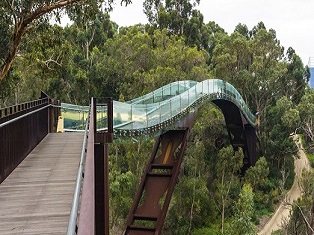
This is one of the largest inner city parks in the world, boasting a total area of 400.6 hectares. The landscape is made up of a combination of cultivated gardens and natural bushland, featuring 319 species of native plants and approximately 80 bird species. There are a number of attractions you can enjoy at Kings Park , such as taking a guided tour to learn more about the area, or following one of the trails. The Lotterywest Federation Walkway takes visitors through the botanic gardens and up into a canopy of trees. The trail begins at ground level and then travels up into a glass and steel footbridge, with a maximum height of 16 metres. It offers a panoramic view of the city and the native flora throughout the park.
The park also features a number of places which honour Indigenous culture , such as the Aboriginal Art Gallery, the Beedawong amphitheatre and the Boodja Gnarning Walk. There are also a number of memorials and honour avenues —the most famous one is the State War Memorial Cenotaph, which attracts over 40,000 people for the annual ANZAC Day Dawn Service.
Free City Walking Tours
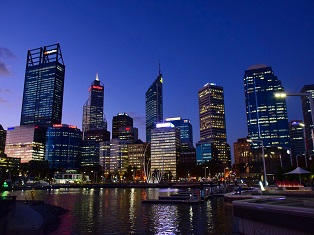
These walking tours are helpful for people who are new to the city and looking for an orientation, or those who would like to learn more about the history, arts and culture in Perth. The iCity Information Kiosk is located in the Murray Street Mall and the volunteers are available to provide visitors with information about events, activities and attractions. They also offer brochures for self-guided tours.
Stirling Gardens
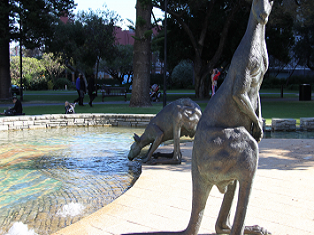
When the Swan River Colony had first settled, this spot was established as an acclimatisation garden, where plants were raised from seeds. This included grapes and other fruits. In 1845 it was opened as a botanical garden and some of the original trees still remain here today. It underwent reconstruction work in 1965, to add a retaining wall and shallow pools of water. It’s now the oldest public garden in Perth and features a number of artworks and sculptures.
Bells Rapids
This natural attraction is located in Brigadoon in the Swan Valley and features picnic areas and bush walking trails alongside streams and waterfalls. It’s also a prime location to watch the annual Avon Descent White Water Race, although swimming is not permitted in the area. The grey kangaroo can be spotted here at certain times of the year.
Lesmurdie Falls
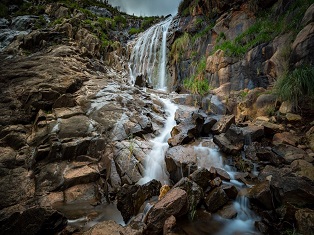
This waterfall is located in the Lesmurdie National Park in the Perth Hills and is considered to be one of the most spectacular features of the Darling Ranges escarpment. The trail begins at the top of the falls and can be followed down to the base, where there is lush vegetation and a picnic area. At the top of the falls there is a lookout, so you can get a perfect view of the area. The trail is considered moderate in difficulty and is approximately 2 kilometres long.
Mount Dale Walk Trail
This 2.5 kilometre trail allows hikers to walk up to Mount Dale’s peak, so they can get panoramic views of the Darling Ranges in the Perth Hills and experience the beauty of the natural jarrah forest. The circular walkway goes up through bushland to the lookout, before meeting up with the Bibbulmun Track upon descent. It is considered to be of moderate difficulty.
Visit one of Perth’s Beaches
Perth is known for its sunny weather and beautiful coastline, so why not visit one of the many beaches? There are fantastic beaches from Fremantle to Burns Beach, however the most popular are Cottesloe, Trigg, Scarborough, Leighton and City Beach.
Swan River Loop
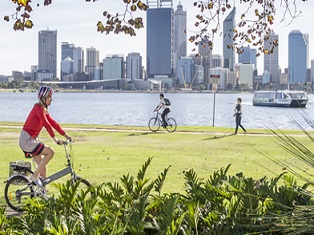
Cycle around the Swan River and take in the sights of Elizabeth Quay, Barrack Street Jetty and the South Perth Foreshore. This is a great way to see Perth city and enjoy the outdoors at the same time. The pathway is considered easy and can even be completed on foot. Remember, it’s compulsory to wear a helmet if you do cycle.
Sunset Coast Cycleway
A 14 kilometre cycleway follows Perth’s stunning coastline from Marmion to Burns Beach. This half-day cycle takes you past highlights including the Marmion Marine Park, Hillarys Marina and Mullaloo Beach. You can also walk or jog sections of the path.
The port city of Fremantle is located approximately 25 minutes from Perth’s CBD and has played a large part in Western Australia’s history. In 1829, Captain Charles Fremantle claimed the West Coast of Australia under the British Crown. That same year, the first British settlers arrived on the shores of the Swan River and began to establish a colony, led by Governor James Stirling.
The Swan River Colony was unique, because it was built by free-settlers — civilians and military — rather than convicts. However, the colony struggled and manpower was needed to build the infrastructure required to ensure its success. As a result, convicts were sent to Western Australia from 1842 and constructed some of Fremantle’s most distinguished heritage buildings, including Fremantle Prison and Fremantle Arts Centre. During this time, the colony expanded 20 kilometres from Fremantle to Perth. Fremantle is also home to two of Western Australia’s most impressive engineering feats : the Stirling Bridge and the Fremantle Harbour.
The Stirling Bridge
Since the colony’s inception, a key focus was on building a bridge over the Swan River to connect Fremantle and the Perth township. Without one, the only way to cross between the two banks was by ferry. The first bridge was built out of timber by convicts in 1867 and named the North Fremantle Bridge, which was later changed to the High Level Bridge.
The first stage of the Eastern Railway was constructed in 1881, linking Guildford and Fremantle. As part of this project, a railway bridge was built in 1880. It was built with much stronger timber trusses than the High Level Bridge to carry the weight of the tracks. Fremantle experienced an economic boom in the late 1800s as a result of the gold rush and significant wheat production and the port became a gateway to the goldfields and agricultural lands. In 1895 a second railway bridge was built to carry stone from the quarry. These bridges were replaced by a new railway bridge in 1964, which is still in use today.
The economic boom led to increased commercial traffic, so a wider and stronger bridge was constructed just downstream from the High Level Bridge in 1898 — it was named the Low Level Bridge. However, it was designed as a temporary structure to replace the High Level Bridge while it was being renovated and widened. These renovations took place in 1909 and the temporary bridge was closed as a result. The High Level Bridge lasted for a total of 73 years, before finally being decommissioned after the Fremantle Traffic Bridge was constructed in 1939. It was eventually demolished in 1947.
In 1974, Fremantle’s newest bridge was constructed 3 months ahead of schedule and received two awards and one award nomination for its design. The Stirling Bridge’s construction was considered significant because it was the first time a computerised wave formula was used to confirm a structure’s properties in a major civil engineering project in Australia. Another noteworthy point about the structure is all 292 of the segments were precast offsite to ensure each one was constructed within tight measurement constraints. As a result of this planning, not a single unit was rejected. The Stirling Bridge was also praised for its aesthetic design, which was achieved through analytic advancements in calculating shear transfer. At the time of its construction it was the longest bridge in Perth.
Fremantle Harbour
When the first British settlers arrived at the Swan River Colony they took shelter at Garden Island to protect their boats from gale winds. This emphasised the need for a breakwater to be built at Fremantle, however for the first 60 years the colony’s growth was hindered due to the lack of a harbour.
There were two jetties built at Fremantle in 1832 and 1854 respectively, yet the first substantial structure wasn’t built until 1872. It was named the Ocean Jetty. In 1891, C. Y. O’Connor was appointed Western Australia’s Engineer-in-Chief and he proposed a scheme for the development of a harbour at Fremantle . This was becoming progressively more important as the gold rush in Kalgoorlie significantly increased trade through this port. In 1892, the project began. It involved dredging a rocky bar to create a channel and dredging the river bed to create a deeper basin. Two moles were also constructed at the entrance of the harbour. The Ocean Jetty was extended to 1100 metres in 1896. The entire project was completed in 1897.
This project is considered significant by Engineers Australia because it’s “an example of superior assessment of oceanic factors.” For example, the breakwaters were the first case of large scale use of random tipped rocks in Australia. This project also introduced a major construction plant to Western Australia and required the management of a large-scale construction force and integration with the infrastructure of the small colony. It exceeded most other Australian ports of its time. Perhaps the most impressive part is that it hasn’t required any major maintenance or modifications in the past 100 years, despite ship growth and variety.
With population numbers expected to rise exponentially, and the global growth of the middle class to continue, the topic of the sustainability of resources becomes more pertinent. More cities are needed, functioning infrastructure must be available, and it must all reflect the hallmarks of modern civilization.
However, it has become apparent that populations are growing faster than cities can be constructed.
Some philosophers and thinkers have started looking to the sea to solve some of these problems. And if their ideas are to become reality, it should present civil engineers some unique challenges. The main challenge: how to build a floating city.
The result is a futuristic movement blending civil engineering and marine engineering; seasteading.
A case for floating
Blue Frontiers, a Singaporean startup has linked arms with a California-based nonprofit named the Seasteading Institute to make seasteading a reality in the near future. They are formalizing their efforts on a project dubbed ‘The Floating Island Project’.
Thanks to their unique governing frameworks, these floating cities will create utopias, says the company’s promotional material.
“Seasteaders plan to provide you with the technology to found your own floating nation on the ocean. And seasteading is already happening,” said president of the Seasteading Institute Joe Quirk, at a futurism conference named Voice & Exit in 2015.
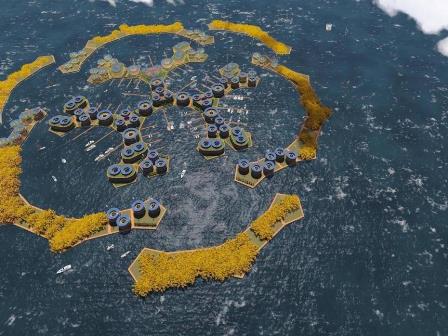
Quirk explains that floating cities are not a new idea - engineers have been engaged in building floating communities for a variety of reasons.
Shell has a floating liquefied natural gas (FLNG) facility 475km north-north east of Broome, Western Australia. It is the largest floating facility ever built and is an indicator that a floating life at sea is possible. The floating facility employs 260 local workers. The facility will produce liquefied natural gas for the next 25 years.
Similarly, cruise ships are commonly referred to as floating cities. The existence of floating nuclear-powered military submarines, ships and even floating nuclear power plants are becoming a reality.
“Nearly half the world’s surface is a blank slate, unclaimed by existing governments, and we want to create a thousand startup governments on the sea,” Quirk said. A floating city might also have a unique advantage that may just attract the environmentalists; solar power.
Engineers are currently building an energy producing system utilizing a process known as ocean thermal energy conversion (OTEC). Essentially, it turns the ocean into one big solar panel.
With seawater absorbing a lot of the sun’s emitted energy, the thinking is that the heat at the surface of the ocean can be captured and converted into electricity. The process includes deep cold seawater, heat exchangers, refrigerants, and a turbine. The lead engineers of Makai Ocean Engineering explain in this video:
Soon a reality?
In January 2017, the Seasteading Institute and the government of French Polynesia signed a Memorandum of Understanding, setting the stage for a seastead to be constructed. Blue Frontiers, the company spearheading the project, alongside the Seasteading Institute, must, however, raise all the funds.
The company in charge of constructing the floating city s a company named DeltaSync. Quirk says that humanity could be uplifted because of future floating cities. He is advocating a mantra of ‘ocean first, space second’.
He also reflects on rising sea levels in French Polynesia, thanks to global warming. A future which includes floating cities could save entire communities from being swept away by the ever encroaching sea.
“Is it doable? We walked on the moon 45 years ago. It’s easier to float than fly. It’s cheaper to build seastations than space stations.”
Blue Frontiers has even created its own crypto-currency for the floating city they plan to build in French Polynesian waters. They hope to have a functioning example by 2020, but still have a long way to go and a lot more money to raise before the project truly sees the light of day.
Quirk believes they could have a functioning floating city completed by 2050 if all goes according to plan.
However, Silicon Valley billionaire investor, Peter Thiel, is a little skeptical, he feels that the seastead is “not quite feasible from an engineering perspective”. He previously invested $1.7 million into the Seasteading Institute but has since extricated himself from the project.
Nonetheless, engineers are at the forefront of creating sustainable solutions to the world’s most pressing problems. With technological growth experiencing great leaps every decade, which in turn is making technology much more affordable, solutions to dire infrastructural problems are being presented.
Works Cited
“Atlantis Rising: Why Floating Cities Are the Next Frontier (Joe Quirk).” YouTube, 16 Mar. 2015, youtu.be/Jr8Iw4o7Gic.
“Prelude FLNG.” Shell Global, www.shell.com/about-us/major-projects/prelude-flng.html.
As Vladimir Putin gets another six years in the seat as the Russian President, Russian engineers tow something through the Baltic Sea, something the world has never seen before.
The metal giant in tow has the symbol of an atom tattooed to its exterior, which onlookers know can only mean one thing; it’s nuclear. The Russians correctly assert that it will be the world’s only functioning floating nuclear power plant. Floating nuclear technologies are not new, but this is an impressive feat of engineering.
Russia’s state nuclear power company Rosatom is behind the construction of the unit.
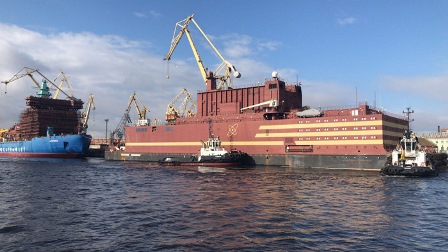
Construction on the unit began in 2009 - the first stage of the build does not include any nuclear fuel. But, in 2019 it will reach stage two. The Deputy Head of the Directorate for the Floating NPP Construction and Operation Dmitriy Alekseenko said:
“At the first stage, the FPU with no nuclear fuel on board will be towed from the territory of Baltiysky Zavod to the landing of Atomflot FSUE in Murmansk. Then, at the second stage - roughly in the summer of 2019 - it will be sent from Murmansk to the seaport of Pevek, loaded with nuclear fuel and with the crew on board.”
Its final destination will be the Arctic town of Chukotka.
Critics abound
Russia is not a stranger to media coverage, much of which is overly negative. As a consequence this new floating nuclear power unit has been dubbed the ‘floating Chernobyl’. Greenpeace went as far as calling it ‘Chernobyl on ice’.
Some critics have said taking a nuclear reactor to an Arctic town may pose a danger to the environment. But Rachel Becker, writing for the Verge, makes a pertinent point - some critics are making risk assessments on the project, but conveniently overlooking the fact that submarines have been powered by nuclear means for 60 years.
Furthermore, experts warn that judging one nuclear plant by heavily publicized historical plant meltdowns is damaging the future of an energy source that should be part of a country’s energy mix.
Usefulness
According to Rosatom, the floating nuclear unit would be providing electricity for 100,000 people through its 70 megawatt capability. After the nuclear unit goes live in the coastal town of Pevek, it will be the most northerly located nuclear plant in the world.
The Russian government doesn’t intend slowing down; the Akademik Lomonosov is one of many mobile transportable low-power units planned to provide electricity. The mobile units can be used to power “remote industrial plants, port cities” and offshore gas and oil platforms.
The mobile unit currently traversing the Baltic Sea is a Floating Nuclear Thermal Power Plant (FNPP). The nuclear reactors the plant will utilize include technologies first devised in 1980 to power Russian icebreaker ships.
Bringing ship building and nuclear technologies together is now the pride of Russian engineers. To attempt to quell critics of the technology, the engineers of the state-run nuclear company put out some assurances in a press release:
“The FNPP is designed with the great margin of safety that exceeds all possible threats and makes nuclear reactors invincible to tsunamis and other natural disasters.”
Works Cited
Becker, Rachel. “The Scary Part of the Russian Nuclear Power Plant Isn't That It Floats.” The Verge, The Verge, 2 May 2018, www.theverge.com/2018/5/2/17313174/floating-nuclear-power-plant-russia-academik-lomonosov-chernobyl-titanic.
“The World's Only Floating Power Unit 'Akademik Lomonosov' Takes the Sea.” Benefits of Nuclear Energy, www.rosatom.ru/en/press-centre/news/the-world-s-only-floating-power-unit-akademik-lomonosov-takes-the-sea/.
A vast number of jobs are potentially on the chopping block in South Africa: engineering professionals, senior project managers, energy storage specialists, coal truck drivers, technicians, asset managers, operations officers, and others. They are seriously threatened if the state-owned power utility, Eskom, restructures its operations.
Presently it powers 95 percent of South Africa, but it is not looking good. It is struggling to weather historical maladministration, a failed nuclear deal with Russia, crippling debt and a change of presidents. Electricity distribution is once again under the microscope.
The situation is looking particularly dire as the country moves into their winter months. Three managers at the company were recently suspended, deemed responsible for coal shortages, and the utility is also without a CEO at the moment.
Up for debate?
To ensure an ongoing electricity supply in the country an open public debate was held in Johannesburg earlier this month. It was tasked with asking the pertinent question: ‘Should Eskom be restructured and if so how and when?’
Frans Baleni, the Deputy Chairman of the Development Bank of Southern Africa and former Secretary-General at the National Union of Mineworkers (NUM) argued that the utility has served South Africa well; he believes it is impossible to turn back from the network footprint it has.
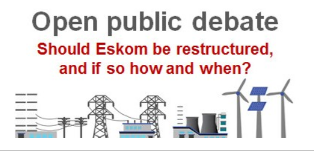 He says that Eskom has a solid fleet of generation plants, but concedes that they are now aging and need to be upgraded.
He says that Eskom has a solid fleet of generation plants, but concedes that they are now aging and need to be upgraded.
He warns that a complete restructuring of the utility would put 40,000 jobs at stake. He proposes that the utility deals with governance issues, focuses on building investor confidence and deals with corruption decisively, so that business performance can be prioritized.
Miss Nelisiwe Magubane was also one of the speakers at the debate. She is a Non-Executive Director of Eskom and Former Director-General at the Department of Energy. She is an electrical engineer with 25 years of experience. She is a key player in energy policy in the energy sector. She has also been named as one of the top 50 most influential people in the energy sector in South Africa.
She commented that those countries with a more privatized energy sector had superior systems, when compared to the vertically integrated state-owned utility business model. However, she thinks the terms and conditions surrounding the privatization of the energy sector in South Africa should depend on whether a private system would lead to the lessening of inequality and poverty.
She said:
“What kind of industry structure is going to meet our objectives? You need skills, you need drive, you need financial astuteness. We need to have a proper governance of the energy sector. It needs to be beneficial for all South Africans.”
Dr Grovè Steyn, a graduate from the University of Cape Town and the University of Sussex, was the last speaker at the event.
Steyn started his career as an Industrial Engineer at Eskom. He went on to become a leading infrastructure and regulatory economist in South Africa. He is currently the Managing Director at Meridian Economics. He says undoing the 95 year institutional model of Eskom is going to be a tough process, but it has to be done. He explained:
“This institutional model has long since outlived its usefulness. It has now become critical for South Africa to embrace the technological disruption and address the environmental imperatives in the power sector.”
Steyn says Eskom’s ‘abuse of dominance’ in South Africa has led to ‘managerial moral hazards’. Citing numerous studies, Steyn highlighted the ‘human cost’ of coal power stations - explaining that coal power reportedly kills 2,000 people in South Africa per year.
Steyn advocates for clean, renewable energy sources. He notes that the reduction of costs in technologies such as solar and energy storage means governments have little choice but to use the cleaner alternatives in new energy project builds.
He also wants the energy sector to open the industry up to new players, to move away from the state-owned monopoly. More choice, more competition and a democratized energy industry can’t be a bad thing.
“It is now globally recognized that electricity generation is best organized as a competitive sector. And our own experiences with our IPP program supports this very strongly.”
Where are the jobs being created?
Power sector talks, which are now a national conversation, are pressing for the sector to be overhauled. South Africans need to ensure they are skilled-up to deal with the newer power generation technologies, and the jobs that are created through them.
Some of the traditional jobs will begin to dwindle; coal truck drivers are particularly concerned that they will be made redundant. Already Eskom has said it wants to shut down four coal power stations by 2020. In their stead the country is asking renewable energy providers to apply for tenders to create renewable plants in South Africa.

The renewable energy industry is responsible for the creation of a large number of jobs around the world. According to the International Renewable Energy Agency, there were 3.4 million renewable energy jobs available in the photovoltaic industry in 2017 alone. The entire energy industry accounted for 10 million jobs last year - with China supplying 43 percent of the industry.
A group providing renewable energy, Abengoa, has just completed the construction of a concentrated power plant in the Northern Cape. They believe South Africa’s best bet for a secure renewable energy supply is to go with blended energy plants: with both solar photovoltaic (PV) technology and concentrated solar power (CSP) technologies.
Works Cited
Bloomberg. “Renewable Energy Jobs Are Becoming More Available.” IOL Business Report, 11 May 2018, www.iol.co.za/business-report/energy/renewable-energy-jobs-are-becoming-more-available-14881893.
Creamer, Terence. “South Africa Urged to Consider CSP-PV Blend to Lower Cost of Dispatchable Solar Generation.” Engineering News, www.engineeringnews.co.za/article/south-africa-urged-to-consider-csp-pv-blend-to-lower-cost-of-dispatchable-solar-generation-2018-05-07.
Watson, Amanda. “Which Way for Eskom?” The Citizen, citizen.co.za/news/south-africa/1925176/which-way-for-eskom/.
The Railway Reserves Heritage Trail follows part of the Eastern Railway Deviation from Bellevue to Wooroloo in the Perth Hills. It’s unique in that the trail is a 41 kilometre loop built entirely on railway formations — however there are multiple entry points, so it’s possible to complete smaller sections. The trail passes through quaint communities including Darlington, Parkerville and Mundaring, as wells as the John Forest National Park. There’s also the opportunity to watch waterfalls and visit points of natural and historical significance, as well as explore the scenery, flora and fauna of the Perth Hills. The trail can be completed by walking, cycling or horse riding.
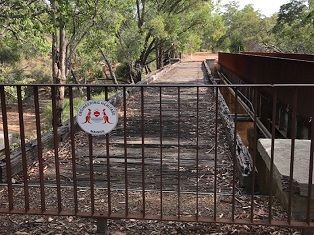
The Eastern Railway Deviation
The residents of the Swan River Colony became reliant on railway networks in the 19th century, to combat the large distances and open spaces in Western Australia. The Eastern Railway, which spanned Fremantle to York, was one of the major railroads built for this purpose and its construction was considered a major technical feat at the time.
The first stage of the line spanning Fremantle to Guildford was completed in 1881. Shortly after this, planning began on stage two of the line, which was supposed to cross the Darling Ranges by travelling parallel to the existing roadway at Greenmount Hill. However, the steep gradients and curves made this location less than ideal. Despite this, the work was completed in 1884, taking the railway out to Chidlow. Stage three of the project saw the railway extend to York — this was completed in 1885. In 1889 a branch was added to the railway line, so trains could travel south to Albany.
C.Y. O’Connor was appointed as Western Australia’s Engineer-in-Chief in 1891. The Eastern Railway had suffered many derailments and inefficiencies due to the challenging terrain of stage two, which meant the system was running at a loss. As a result, O’Connor commissioned a Victorian railway engineer to find an alternate route through the Darling Ranges. Construction on the new section began in 1893.
This major engineering project required large amounts of soil and rubble to be moved to construct embankments. Workers were also tasked with blasting and digging through granite to create Western Australia’s first railway tunnel. This was completed using only picks and shovels, dynamite and horsepower. The tunnel was an engineering feat in itself, and still remains the only rail tunnel of its type in Western Australia. Cut through 332 metres of solid granite, the two ends of the tunnel line up with remarkable precision, despite the engineers labouring under extreme difficulties.
The new section of the railway opened in 1896 and led to the creation of new settlements and industries in the Perth Hills area — such as timber cutting, quarrying and the cultivating of orchards. In 1897, another branch was added to the line, this time extending the railroad out to Kalgoorlie.
In 1961, the Western Australian government commissioned the construction of a new route, which would link Kwinana, Fremantle and Kalgoorlie. The completion of this new railway in 1966 meant the Eastern Railway Deviation closed. The tracks were removed in the 1970s and the route was turned into a heritage trail.
We have been asking EIT’s resident engineers to share with us the object that inspired their engineering career or the tool that has helped them the most throughout their career.
Below is a video of EIT’s Dean Steve Mackay telling us about the book that ignited his passion for engineering as a child.
Now we want to hear from you! Post a photo of yourself with the object that inspired you to study engineering or the tool you’ve found most useful throughout your career on Facebook or Instagram. Don’t forget to use #eitoncampus and tag us in your post. We are giving away one $50 Amazon gift card every week to our favourite entrants.
**T&Cs: This is in no way sponsored, administered or associated with Facebook or Instagram. By entering, entrants confirm they are 13+ years of age and agree to Facebook and Instagram’s terms of use. Entrants also consent to EIT reposting the photo on our social media channels. We will be selecting one winner each week until DATE**
How to Increase you Study Skills in your Lunch Break 
Go for a Walk
Don't sit still for too long - get up and go for a short walk in your lunch break! This will help you to clear your mind, de-stress and re-energise so you're focused when you get back to your study. It's also useful to stretch, as this will help you relax and relieve tension.
Review your Notes
Research has found that reviewing your notes within the first 24 hours of taking them leads to better retention of the material. Ignoring your notes until just before your exam means you're relearning the content rather than revising it. Why not read over your notes and write down any questions you have about them during your lunch break? This way you can engage with the course material when you get back to study.
Eat Healthy
Eating unhealthy snacks, such as chocolates and lollies, may give you a quick surge of energy. However they will cause you to crash soon afterwards, hindering your performance. You're best off eating nuts, fruit, vegetables and protein to keep your energy levels consistent and your memory functioning well.
Plan your Time
Make sure you get your assignments and study done on time by creating a schedule. Research has found you're more likely to remember course content if you study it regularly, compared to cramming the night before. If you've recently got your results back from a quiz, test or assignment spend some time reading feedback. Use this as an opportunity to work out what you will know and what you don't. This will help plan your study time better, so you continue to improve on your results.
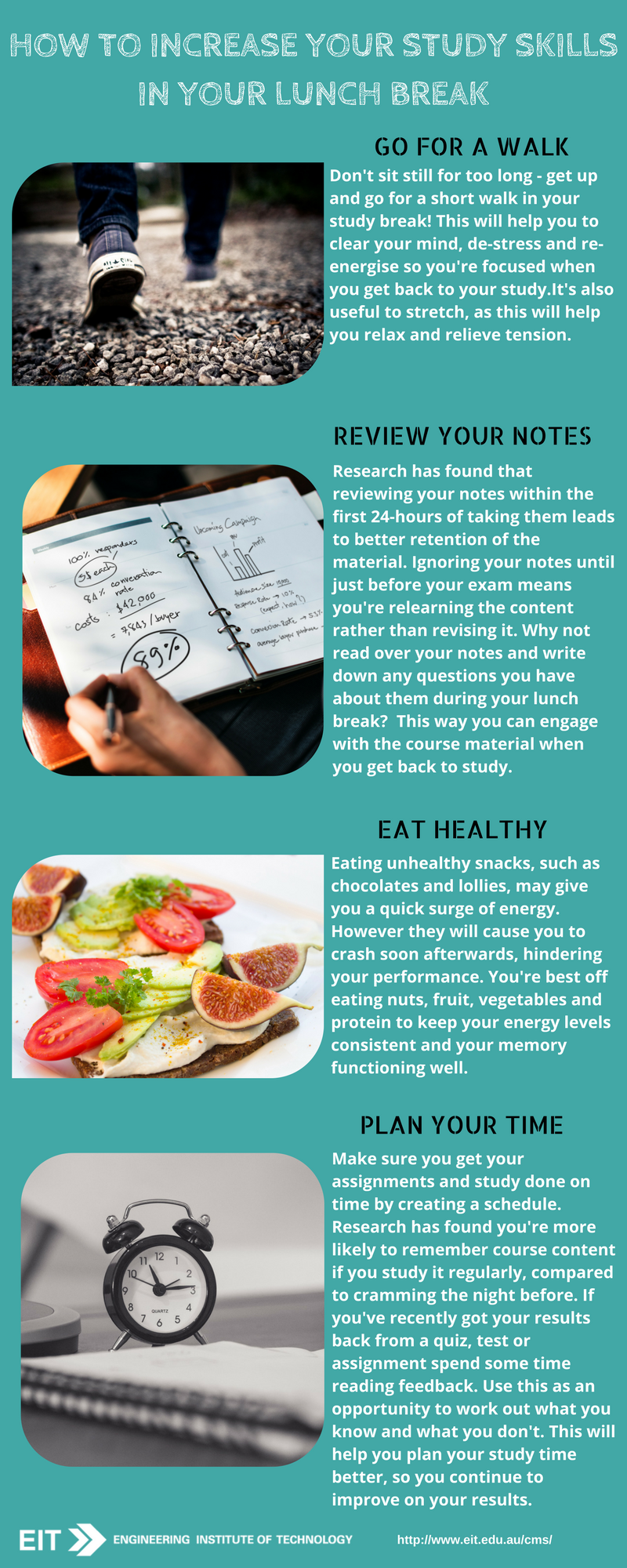
The Engineering Institute of Technology took part in the 2018 Future Unlimited West African Education Exhibition in April. The exhibition was organized by the Australian Trade and Investment Commission. Its aim was to give Australian education providers the opportunity to promote their course offerings to prospective students in Africa. The attendees were a mixture of younger students interested in undergraduate diplomas and degrees, and graduates wanting to embark on further studies.
The exhibition took place in Lagos and Abuja in Nigeria, and in Ghana’s capital city Accra. David Gadjus, EIT’s International Education Manager for Africa and South America, chatted to students about the educational opportunities our college offers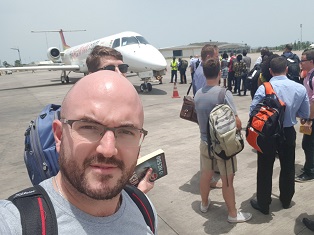 those with a passion for engineering. He was able to apprise them of both the online and on campus options for study, and indeed encouraged them to consider a combination of both.
those with a passion for engineering. He was able to apprise them of both the online and on campus options for study, and indeed encouraged them to consider a combination of both.
Starting the journey in Lagos, David found that many Nigerian students were either critical, or at least skeptical, of online education. He heard tales of colleges pushing unaccredited courses onto young Nigerian, with profits their sole motivation.
Something else he noted with interest was that the legitimate education institutions in Nigeria are predominantly polytechnic universities and TVET colleges, rather than those offering higher education options.
EIT, on the other hand, offers African students (and indeed students throughout the world) the opportunity to gain BSc Degrees in a range of engineering disciplines with the added option to complete engineering Master Degrees. These are accredited by the Australian Government and by globally-based engineering bodies which are signatories to the Sydney and Washington accords.
According to the Australian Trade and Investment Commission, Nigeria’s demand for education is outstripping the capacity of their local education institutions. Diploma graduates are increasingly considering further higher education opportunities abroad, as are the new crop of school leavers.
During David’s trip, he met with engineering councils, companies, agencies and universities in both Nigeria and Ghana. They all expressed the belief that African students are hungry for sound qualifications in higher education. Since 2012 Nigeria has seen the numbers of Nigerians studying abroad grow fourfold. Gadjus says:
“In Nigeria, each year, there is a need for 1.5 million placements in universities, but only a third of that is made available to them. There is a pool of a million students that need better opportunities.”
The Engineering Institute of Technology has been providing engineering education to students in Southern Africa for many years now and is increasingly securing a larger footprint in Africa. As newer technologies are embedded in Africa, the chance to educate and train the next generation of great African engineers, both in their country and abroad, becomes more of a reality.
The outlook for the future of education in Africa, despite its historical shortcomings, is looking more positive.
Studying abroad
EIT offers excellence in education, with qualifications which are widely accredited, to allow students some mobility globally. Apart from the option of acquiring these qualifications from home, via EIT’s live and interactive online platform of learning, students can also apply to study on-campus in Perth, Western Australia.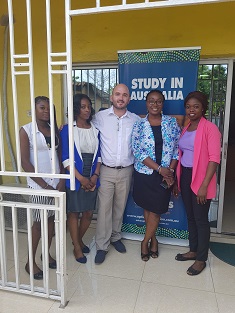
Moving on to Abuja, Nigeria, David met with the African University in Bayelsa State, just north of Port Harcourt in the South of Nigeria. They are preparing to open their Faculty of Engineering within the university and hope to have everything in place by September. He also met with experts actively working on engineering courses to be run in Rwanda.
David was gratified to see the energy of the people behind the education institutions perfecting and refining engineering education and training in Africa. Many are keen to collaborate with EIT - an exciting prospect for our college.
Good outlook
After visiting Nigeria, David traveled to Ghana. He went to the capital city, Accra. He noted that Ghanaian graduates showed a greater interest in completing postgraduate degrees abroad. According to the Australian Trade and Investment Commission, as of 2017, only 600 Ghanaian students were studying in Australia. This is a number the Australian government would like to see grow over time.
In Ghana David met a young man who has been following EIT’s activities for many years and is an avid reader of our newsletter. Much to our delight he has now enrolled on EIT’s Master of Engineering (Industrial Automation) - he will start his academic journey in July, on campus in Perth.
David’s next trip will take him to Mauritius, Kenya and Egypt. In these countries he will endeavor to establish relationships with the various engineering and education bodies and of course meet students who are excited by the idea of education and careers in engineering.
1969 was a big year for the engineers and scientists at NASA; the year they enabled humans to reach the Moon. Next year, it will be 50 years since Apollo 11 touched down on that lunar surface.
This year the goal is Mars, although the players look a little different to 50 years ago. Now it seems that billion dollar private companies and government agencies are all competing in the space race.
SpaceX, the aerospace engineering company headed up by Elon Musk, is soon to launch their BFR (Big Falcon Rocket); the test before sending astronauts to Mars.
SpaceX has been innovating feverishly in the aerospace engineering industry. They have perfected the landing of rockets after launch, and they have mastered the reusing of previously launched rockets. They have also been firing rockets into space at almost a tenth of the cost of those sent by NASA.
Instead of remaining the stuff of dreams and science fiction tales, Elon Musk believes that a human colony on Mars will become a reality one day. He predicts SpaceX will be sending spacecraft to Mars in 2019.
Human missions
Getting spacecraft to Mars is one thing, but getting humans there is quite another. At the Mars Desert Research Station (MDRS), in the small US town of Hanksville, in Utah, engineers and scientists are collecting data that will be used on future Mars missions. The research station and program were set up by the Mars Society.
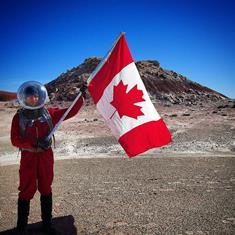
Zac Trolley is a Canadian Electrical Engineer and future Mars settler. Since childhood he has dreamed of reaching the Red Planet. He has been close; he was part of a two week Martian Simulation at MDRS in February 2018. During this time his engineering skills were used to help the team prepare for a future Mars mission. Zac tells us:
“Mars was the original target for the consecutive missions after Apollo, but that all got canceled. So, the architectures are all there, what’s missing is political will and funding. A lot of that political will is coming from the private sector, you know, with these billionaire entrepreneurs who are bringing their billions of dollars with them.”
He says that the conceptual ideas are finally moving into the engineering feasibility phase; these were missing from the science fiction pipe dreams of the past. Zac worked as the Crew Engineer for the project; he was tasked with maintaining the infrastructure of the Habitat. The Habitat (or Hab) is a two story 8 meter cylindrical building that houses the spacesuit simulators, has an exterior airlock, offers a shower room, toilet room and rear airlock. The rear airlock opens up to tunnels that lead to other structures at the research station.
During the two week simulation he also assisted others in their research projects. He explained:
“We conducted research on NASA plant growth systems, dust accumulation, material abrasion for space suits, and participated in many outreach activities including recording 360 video for VR applications.”
Donning some Hollywood-prop-esque space suits, Zac and his fellow team members navigated the desert areas of Utah, pretending to be astronauts. The location was picked due to its geology - it is similar to Mars’ dusty surface.
Everyone should be an engineer
Zac was part of the 188th iteration of the Martian simulation. He says that the knowledge being harvested from the Mars simulations will be invaluable to future missions. He explains:
“When a Mars mission happens, the engineers, the assembly team, and all the people that are involved, all the surrounding teams; they’re going to have to have an intricate knowledge of the mission as well. The more people that go through these simulation missions, and get an idea of how they operate and the mindset of the crew, even if they don’t go to Mars, their designs and their decisions regarding the rockets and the Habitat are going to be influenced by that. And it makes a better mission.”
Zac, as the Crew Engineer, had to keep the power grid working, the water system functioning, and all the other “bits and bobs and bolts” maintained. Nonetheless, Zac stresses that everyone who travels to Mars will need basic engineering knowledge so they can troubleshoot any on-board technologies. They will also have to master first aid training!
He believes that the first mission to Mars will need to be made up of members who are well-versed at working as a team. Zac noted that the MDRS simulation mission focused on the social aspects of working in a team more than the technical engineering feasibility.
Zac may be a little more conservative than Musk, he believes that aerospace engineering is still two decades away from putting humans on Mars. He believes firmly, however, that when a mission is at last undertaken, the technical and human elements must be aligned.
When asked what engineering education can do to fully equip engineers for future Mars missions, Zac said that engineering education should inject creativity and risk tolerance into the curriculum. He said:
“When I was doing my engineering degree, one of the most valuable things to me was extracurricular activities. I joined some clubs and I did some things outside of class and that was where I was able to really show my creativity.”
Works Cited
Applied Futurism, zactrolley.com/.
“Mars Desert Research Station.” Mars Desert Research Station, mdrs.marssociety.org/.
“There's a Starman, Sitting in a Car ... and It's All to Do with Elon Musk.” ABC News, 7 Feb. 2018, www.abc.net.au/news/2018-02-07/spacex-rocket-takes-sports-car-into-space/9403618.

Many of Australia’s native wildlife species happily live in Perth. This includes kangaroos, wallabies, possums, black swans, quokkas, birdlife, reptiles and even koalas. Plus our oceans are home to much marine life such as dolphins, sea lions and tropical fish. Here is a list of the best places to go and spot our native wildlife.
Whiteman Park and Caversham Wildlife Park
Located 18 kilometres north-east of the Perth CBD, these wildlife parks aim to conserve and rehabilitate native fauna and flora. At Whiteman Park , there are eight different species of mammals including western grey kangaroos, southern brown bandicoots, black gloved wallabies, honey possums and short-billed echidnas. There are also over 100 species of birds —such as the wedge-tailed eagle and the black swan — and 32 reptile species.
Caversham Wildlife Park is a privately-owned native animal park situated inside Whiteman Park. It is home to 25 different mammals including dingos, koalas, kangaroos, possums, sugar gliders, Tasmanian devils, quokkas and wombats. You can also spot kookaburras, tawny frogmouths, black swans, emus and cassowaries, as well as a number of snakes and other reptiles.
Rottnest Island
Rottnest Island is an A-Class Reserve with a focus on environmental conservation. This means all flora, fauna and marine life are protected by law. The island measures 11 kilometres by 4.5 kilometres at its widest point — no private cars are allowed on the island, so the best way to get around is on a bicycle. There are also bus tours available. This is the only place in the world you will find quokkas living in the wild. There are also a number of frogs, reptiles and birds living on the island. Rottnest is home to some of the most beautiful bays and beaches, so it’s the perfect place to go snorkelling and spot native tropical fish and coral.
Penguin Island
Located just off the coast of Rockingham, Penguin Island and the surrounding waters are home to little penguins, Australian sea lions, dolphins and birdlife. There are 10 little penguins who have been orphaned or injured and cannot survive in the wild, living in the Discovery Centre on the island. Visitors can watch these penguins get fed by trained rangers. This is the best way to see penguins up close as they are often hunting during the day. Boat tours take visitors out to see the wildlife in the natural habitat. There is even an opportunity to swim with the wild dolphins!
The validity of any engineering education and training institution lies in the accreditation of its courses. An ongoing mission for qualification boards around the world is to find providers that are truly educating and training up to spec, and to flag those which are problematic.
Technological advancement has enabled education providers to reassess and rejig their approaches to education; with the advent of the internet, new learning platforms have emerged. But still, recognition and accreditation reign supreme.

The number of students that can be reached when learning online is far greater (even when a synchronous or live approach is used). Students who struggle to access a campus can now acquire qualifications. Better still, online learning is impervious to strikes on campus which threaten the running of classes and the platform is usually robust enough to cope with small or large intakes (the size of the ‘lecture theatre’ online is much more flexible).
An event that made a strong case for online learning was the Fees Must Fall movement in South Africa. It was a nationwide protest for tuition-free universities; a significant disruption to academic progress around the country. The movement lasted from October 2015 to October 2016.
During that time universities relied on their online portals and other virtual platforms. Both the University of Witwatersrand and the University of Pretoria reportedly ran efficient online modules that enabled engineering students to continue their studies undisrupted, but remotely.
An institution which has a well-established synchronous online learning platform is the Engineering Institute of Technology (EIT). For a good ten years now South African students have been acquiring their engineering qualifications through EIT. Interestingly, after the disruptions at South African universities, the interest in online study and training has grown tenfold.
Achieving recognition
As far back as 2014 the South African Qualifications Authority (SAQA) began recognizing EIT’s Advanced Diploma of Industrial Automation at NQF Level 6 - a level equivalent to the National Diploma in South Africa.
It was a good sign that international qualifications could obtain official accreditation in South Africa. With high numbers of unskilled and unemployed young people, and spiraling attrition rates within their education institutions the country needs solid, safe education options for students of engineering and technology.
The Engineering Council of South Africa (ECSA) has taken a magnifying glass to online institutions intent on educating and training South African students. They have shown much interest in the interactive online learning model EIT provides.
Recently South African, Kevin Tatenda Nherera, graduated from EIT’s online Advanced Diploma of Electrical and Instrumentation Engineering for Oil and Gas Facilities. He has been recognized as a Candidate Technician by ECSA.
This has resulted in a hopeful and positive outlook for online education and training. There is an indication that those courses, previously denied accreditation by the authorities in South Africa, may be legitimized in the near future.
Online institutions must, however, ensure their delivery platforms are engaging and encourage students to continue through to graduation. Attrition rates tend to be far higher when courses are delivered asynchronously.
The Dean of Engineering at the Engineering Institute of Technology, Dr Steve Mackay, has been on the forefront of gaining accreditation for online modules, but is a fierce advocate for the relationship between lecturer and student, claiming that an online platform should not impede this. He said:
“My suggestion is to avoid asynchronous online education. Attend courses where instructors and students meet in real time, via video conferencing or web conferencing. This is synchronous online learning; the type of inflexible online learning that drives students to complete their qualifications.”
He goes on to add:
“I am very pleased that our learning platform has also enabled us to offer BSc degrees in Engineering online, to both school leavers and to advanced diploma holders. With the added option to study on campus in Australia”
With the weather cooling down as winter approaches Perth, it’s time to find some good indoor activities. Why not visit some of our museums? With subjects ranging from vintage video games and cricket, to trains and submarines, there’s something for everyone.
The Nostalgia Box Video Game Museum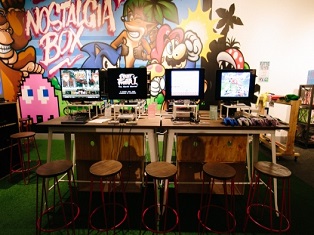
This museum showcases over 100 gaming consoles from the 1970s through to the 2000s. It takes you behind the scenes of the gaming world, by sharing stories about how each console was created. Plus it’s interactive – you can spend hours playing the games from your childhood, or trying out games you’ve never played before. It’s open Monday to Sunday from 10:30am-5pm and is located in Northbridge.
WACA Tours and Museum
The Western Australia Cricket Association has been the home of cricket in WA since 1893. It has a maximum capacity of 23,859 people, although there have been several occasions where crowds have packed out the stadium past this. Plus, the Guinness World Record for the highest basketball shot in the world was thrown from one of the floodlights. If you’re interested in the history of cricket in WA, the WACA runs tours every weekday. There is also an onsite museum featuring exhibits and memorabilia.
Maritime Museum
Showcasing many iconic vessels from Western Australia’s past, the Maritime Museum’s exhibitions represent Fremantle’s history as a coastal city and port. Ever wondered what life is like inside a submarine? There are daily tours inside the HMAS Ovens, an Oberon class submarine, where you can learn about our wartime past. There are a number of permanent exhibits displaying historic ships, the lifestyle of maritime travellers, and the history of Western Australia’s naval defence. The museum is open daily and is located in Fremantle.
Aviation Heritage Museum
This museum showcases the history of civilian and military aviation in Western Australia, by featuring over 30 aircrafts and thousands of artefacts. It also shares the stories of people who have contributed to this history, from pilots and engineers, to people who worked on the ground. Interactive exhibits allow visitors to experience the way aircrafts work. There are guided tours run by the museum’s volunteers – one of these allows you to experience what it’s like inside a restored Lancaster bomber from World War II. This museum is run by the Royal Australian Air Force Association along with assistance from community sponsors and visitors. It’s located in Bull Creek and is open daily.
Fremantle Prison
This maximum-security prison was continually in use for almost 140 years, until it was decommissioned in 1991. In 1992, it re-opened as tourist attraction to educate the public on the history and rich folklore of the punishment system. There are several tours which focus on different aspects of the prison’s past – from the convict era to its life as a maximum-security gaol – you can even explore the underground tunnels built by prisoners. Tours are run daily.
Art Gallery of Western Australia
Founded in 1895, this gallery showcases pieces from historic and contemporary Australian and Indigenous artists, as well as international art. There are also a number of special exhibitions which come to the gallery for a limited time, creating diversity in shared ideas. This museum is located in Northbridge and is open Wednesday to Monday.
It was once the stuff of science fiction novels and films, but artificial intelligence and robot sentience are here and developing fast. A range of experts are responsible, including engineers.
This burgeoning reality is presenting the world with advantages that cannot be understated, but we also need to remain vigilant.

Science fiction has presented us with a number of negative scenarios which have entertained us, but knowing that fact is sometimes stranger than fiction it is worth remaining wary. Do we want to entrust the operation of our important infrastructure to sentient machines?
Enter a new documentary entitled ‘Do You Trust This Computer?’ The 2018 documentary questions the internet-connected, artificially intelligent technologies that are increasingly capable of harvesting our data.
Do we really have a handle on how this will all unfold?
Rapid advancement
The speed at which technology is developing is causing chaos for those who are neither agile nor flexible enough to keep up. As we know, jobs involving repetitive tasks are being replaced by clever machines which are able to work relentlessly and tirelessly.
Whilst there have been no worker protests over robot replacements in the assembly line, the same cannot be said for autonomous vehicles. Taxi companies are up in arms. The reality is that a computer will inevitably become more skilled than a human driver. It will not succumb to distractions, or to tiredness and it will not battle slow reflexes. The future will see fewer vehicle-related fatalities.
The medical industry has also been taken by storm. Computers are reading mammograms, they’re diagnosing diseases and offering treatments (in many cases more efficiently and accurately that doctors).
Hello, Robot Overlords
At the very beginning there was a question that would ultimately define the concept of AI.
The question was: Can a computer think?
Dutch computer scientist and 1972 Turing Award winner Edsger W. Dijkstra replied with, “Can a submarine swim?”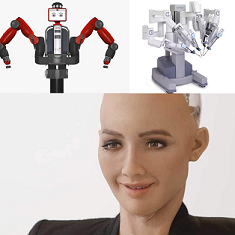
A submarine is engineered around the basic principles of marine life. It then goes on to improve on nature by being more robust than a marine creature - it has a harder exterior ‘shell’. It also trumps the swimming speed of marine creatures. It has in fact, surpassed the natural world.
Similarly, with the basic principles of thought installed in computers, and becoming increasingly refined, is AI poised to surpass the capacity of our human brains? In many instances it already has and will strengthen as quantum computing powers up.
These examples show how remarkably capable and cognitive robots have become: Baxter is replacing workers on the assembly line. The biomedical DaVinci robot is performing precise surgeries and with each operation improving its capabilities; essentially learning from experience. Sophia the Robot is having intelligent conversations with interviewers.
The future has become the present.
Autonomous weapons
More alarming is the impact on warfare; drone technology has emerged and with AI capability are scanning territories as they fly.
Peter Singer, the author of ‘Wired for War’, says there are 10,000 automated drones in the U.S. military - with 80 other countries also operating automated weapon-fitted drones. Essentially an automated, AI-powered arms race is heating up. 6,000 concerned senior engineers and scientists have drafted an open letter to AI industry leaders; to highlight the dangers of AI development.
Elon Musk and Stephen Hawking were among the signatories.
Engineers and scientists are determined that technologies powered by AI should promote the wellbeing of life on planet earth. Elon Musk explains that AI could, even without evil intent, make seemingly irrational decisions because of its capacity to learn. He says:
“AI doesn’t have to be evil to destroy humanity. If AI has a goal, and humanity just happens to be in the way, it will destroy humanity as a matter of course. Without even thinking about it, no hard feelings. It’s just like, if we’re building a road - and an anthill happens to be in the way - we don’t hate ants, we’re just building a road. And, so, goodbye anthill.”
A robot takeover - ala-Terminator 2 – is, thankfully, not likely in the near future. But a little more transparency around the development of machine learning algorithms is required.
Students at Carnegie Mellon University have been working on a standard for ‘algorithmic transparency’. Anupam Datta, an Associate Professor of Computer Science and Electrical and Computer Engineering at the university, explains:
“Some companies are already beginning to provide transparency reports, but work on the computational foundations for these reports has been limited. Our goal was to develop measures of the degree of influence of each factor considered by a system, which could be used to generate transparency reports.”
Transparency will soon be the name of the game. And for engineering industries that make the world go round and whose inventions deeply impact human life, perhaps that’s a good thing.
Works Cited
“Do You Trust This Computer? (2018).” IMDb, IMDb.com, www.imdb.com/title/tt6152554/.
Potgieter, Quintus. “Engineers conduct studies on artificial intelligence and its machine-learning practices.” Start Here..., engineeringcareer.org/news/348-engineers-conduct-studies-on-artificial-intelligence-and-its-machine-learning-practices.html.
The staff at EIT in Perth, Western Australia recently participated in a grammar workshop presented by Danielle Techera our Project and Resources Officer.
If you are looking for some hints and tips on how to improve your English grammar please watch this informative PowerPoint presentation.
If you’re looking for something to do in Perth, why not check out one of our marketplaces? From souvenirs and artisan handcrafts, to fresh produce, food trucks and live entertainment, there’s something happening in every corner of the metropolitan area.
Fremantle Markets 
The Fremantle Markets have been running for over 100 years and celebrate Western Australia’s culture and heritage. Open year-round on every Friday, Saturday, Sunday and Monday Public Holidays, these markets have everything from homewares, fashion, souvenirs and art, to coffee and fresh produce. Make sure you check out the food stalls, which serve numerous cuisines including Indian, Japanese, Turkish, German, vegan, barbecued meats, pastries, cupcakes and chocolates. There’s also live entertainment and events celebrating Australia’s native wildlife and Indigenous culture. These markets are located on the corner of Henderson Street and South Terrace in Fremantle.
Inglewood on Beaufort Monday Night Markets
This market features food trucks, marquees and shops along Beaufort Street – including restaurants, bars and cafes. With over 70 vendors participating in the event, there are countless cuisines on offer including: Japanese, Filipino, Malaysian, Mexican, Spanish, Argentinian, Brazilian, Moroccan, French, Thai, Italian and Vietnamese. There’s also live music and stores selling artisan gifts. This market runs every Monday evening until the end of April – so get in quick as there’s only a couple of weeks left!
Mount Hawthorn Hawkers Market
Featuring over 15 different food vendors and live music, this is the perfect way to wind down on a Friday evening. The cuisines range from Italian, Spanish and Turkish, to Argentinian, Dutch, Thai and Malaysian. These markets are located in Axford Park, Mount Hawthorn – they finish on April 27, so there are only two more dates left this season!
Mt Claremont Farmers Market
This farmers market is held at Mt Claremont Primary School every Saturday morning, no matter the weather. Start your weekend off with a breakfast from one of the many food stalls, including coffees, fresh juices, sausage sizzles, bacon and eggs, French pastries and crepes. Predominately a fresh food market, there’s an array of gourmet produce available, including fruit and vegetables, fish, meat, eggs, dairy and local condiments and olive oils.
Canning Vale Markets
This market runs every Sunday year-round and boasts over 300 stalls selling everything from furniture, tools, clothing, books, music, plants, and fresh produce. Make sure you visit the small selection of food stands to get your hands on hotdogs and fairy floss! They’re located on Bannister Road in Canning Vale.
As the northern hemisphere looks forward to a much deserved summer, innovators in engineering and technology are looking to make subsequent winters a little less hazardous for some.
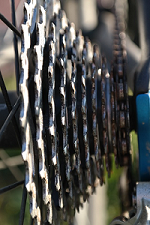
The engineering students at the University of Calgary in Canada are devising ways to keep cyclists and their bicycles safer during the winter months. Apart from the challenges of controlling bikes on pathways that are iced over, cyclists struggle with their gear systems which are also affected in snowy conditions.
When temperatures plummet salt is used to keep the ice off the roads. But it is also sand and grit which get into the derailleur gears (the gears that keep the bicycle moving), and can cause chaos. Lubricating the gears with oil doesn’t help either - it just attracts more dirt.
In general, the metal components of bicycles are in danger of rust and other forms of damage during winter in the northern hemisphere. After a winter of riding, a bicycle basically needs to be fully repaired, with new parts fitted to the frame.
“Winter riding can take a toll on the bicycle, especially if you have a traditional derailleur system. It tends to wear out due to corrosion, and due to gravel being stuck in the chain which causes these gears to chip.”
Those are the words of Calgary engineering student Parth Thakurdesai, speaking to Calgary Eyeopener. He and three other students (Evan Magnusson and Nazanin Moghtaderi, and Alex Robertshaw) have engineered a ‘hub of gears’. They claim it will ensure bikes remain free of corrosion and general damage during and after an icy and wet winter season.
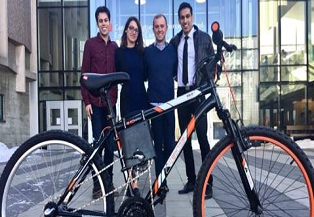
The invention involves connecting the chain to a ‘triangle formation’. The chain goes from the pedals, to a gear hub and then back to the wheel. An encasement protects the gear hub from the weather conditions and prevents dirt from entering the gears.
To test their new invention, the engineers iced up the gears, and then took the bike for a spin. It turned out that they were able to move between gears with ease. In the same icy conditions the traditional derailleur gears would not have been able to shift between gears. In winter conditions many bikers give up and opt to put robust tires on their bicycles.
The students have every intention of further developing their gear system. They will test their improvements over a number of winters before commercializing it.
Works Cited
“Calgary Eyeopener.” CBCnews, CBC/Radio Canada, www.cbc.ca/listen/shows/calgary-eyeopener/.
“U Of C Students Make New Gears to Improve Winter Biking | CBC News.” CBCnews, CBC/Radio Canada, www.cbc.ca/news/canada/calgary/winter-biking-university-of-calgary-1.4606559.
The Engineering Institute of Technology (EIT) has seen significant change in the past 25 years. In its original form instructors provided short classroom workshops and onsite training courses to people already working within the engineering industry. With the rise of the internet, these courses moved online and we developed accredited vocational and higher education courses to be delivered on this new platform. Since then our focus has been on providing interactive online engineering courses, which impart practical skills directly applicable to the workforce. However in 2017, EIT underwent another transformation.
Our brand new state-of-the-art campus opened in East Perth, Western Australia, giving students the opportunity to study four Bachelor of Science degrees and one Master of Engineering degree at this facility. Our CRICOS provider status means international students can study with us in Perth, as long as they meet our course requirements and have a valid student visa.
As a result of this new venture, travelling to meet education agents across the globe has become a significant part of our International Engineering Education Manager Kevin Baker’s job. In February, he spent three weeks in Sri Lanka and India presenting who we are, what we do and why we’re different. Given these agents act as our ambassadors by encouraging potential students to study our courses, it’s important that we partner with people who ‘get us,’ rather than those who see us as just another education provider. For example, it’s imperative all our partners understand our courses are all designed to be job-outcome oriented.
These two-hour-long meetings give Kevin the opportunity for face-to-face contact with each potential partner. He said he is constantly surprised by the gratitude of agents he meets with, as well as their welcoming nature and enthusiasm throughout the information sessions. The format of the meetings differs each time: sometimes agents invite students to attend so they can learn about what we have to offer first-hand – there can be up to 150 people in attendance at one time. Not all agents successfully become a partner of EIT; however, Kevin runs workshops with those who are unsuccessful to impart tips and tricks.
The meetings are pre-planned months in advance to maximise appointments and minimise travel time. Due to heavy traffic in many countries, meetings are generally scheduled according to geographic location, so as to avoid zigzagging across the city unnecessarily.
Later this month, Kevin will be visiting agents in Nepal, India and Pakistan.
The Vasa
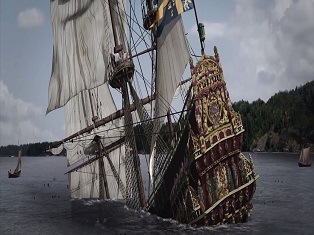
This Swedish ship was constructed between 1626 and 1628 and intended to be part of the Royal Swedish Navy. However, it only got 1300 metres into its maiden voyage before it capsized and sank. King Gustavus Adolphus oversaw the project and put tight time constraints on the engineers to get the ship finished. He also requested design changes mid-project, despite the constructers advising against them. Once the construction was finished, engineers conducted stability tests on the ship and concluded it was not sea worthy. The King ignored this and ordered it to be launched anyway. Light breeze caused the ship to capsize as soon as it left the harbour, and the ship sank as water flooded into the gun portals. 53 sailors lost their lives.
St Francis Dam
The St Francis Dam in California had been operational for two years, when in 1928 it exploded and killed over 450 people. Constructed out of concrete, it started showing signs of cracking shortly after being filled. This is because the dam was built from plans that were originally meant for another site, with no location-specific modifications. During construction, the height of the dam was increased twice, but the base remained the same – this reduced the safety margin for structural stability significantly. For a considerable amount of time leading up to the explosion, muddy water was observed entering the dam from within the foundation. The dam failed less than 12 hours after the last inspection by its engineer.
Purity Distilling Company Tank
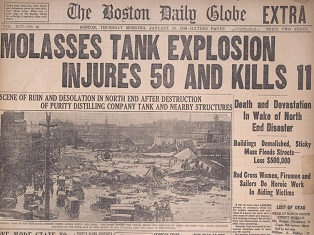
On 5 January 1919, a giant molasses tank blew up and coated a Boston neighbourhood in sticky syrup, killing 21 people and injuring 150. Molasses wasn’t only used to make rum; during World War 1 it was used to make munitions. This tank was built hastily because of the war and as a result, it was never filled to capacity to test for leaks. As soon as it was filled with molasses it began leaking, so the owners painted it brown to camouflage the stains. Investigations into why the tank exploded were inconclusive; however some possible causes were a too-brittle tank or a reaction caused by a mix of hot and cold molasses brought on by extreme changes in temperature. When the tank exploded, 8.7 million litres of the syrup peaked at 27 metres and rushed into the streets at 56 kilometres per hour.
R101 Airship
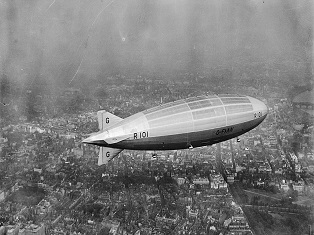
In 1930, British Airship R101 crashed killing 48 people. Originally this airship was conceived by the British Government as an experimental platform. However, after completion, the government decided they’d like the airship to fly commercially in order to compete with a German plane which had just successfully flown around the world. Engineers weren’t given time to fix any of the structural and mechanical issues in the design, nor were they able to run flight trials. As a result, the plane was heavier than intended and the engines were half as powerful, yet twice as heavy as planned. The plane was dispatched on a flight to India, despite being unfit to make the journey and with no regard to the bad weather. The load of fuel and unnecessary cargo exceeded the ship’s abilities and compounded the other design flaws.
Tacoma Narrows Bridge Collapse
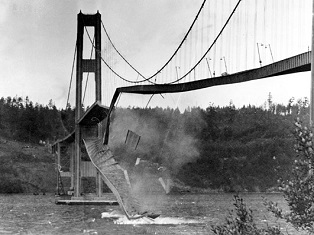
In November 1940, the third longest suspension bridge in the world collapsed, killing one dog. The Tacoma Narrows Bridge was designed to be the most flexible bridge ever constructed and despite exceeding standard ratios for length, width and depth, it was considered completely safe. It was later found that the engineers responsible for the project hadn’t taken into account all the aerodynamic forces brought about by strong winds. The sustained wind that passed over the structure that day caused vortices to occur, which started rocking the extremities of the bridge out-of-time with its middle. This caused one of the suspension cables to snap and the motion intensified, causing the entire structure to collapse.
Cleveland Gas Explosion
In 1944, two liquid gas tanks exploded in Cleveland, Ohio, killing 130 people. There were four above-ground tanks used as storage for the gas and one began leaking, sending white vapours into the air. The wind pushed the vapours towards the sewage system, which created the explosion. This storage tank caught fire and began destroying houses and factories in the area. As firefighters worked on it, a second tank also caught fire. 600 people were left homeless as a result of the damage. It took the all the firefighters in that town to put the fires out.
The de Havilland Comet
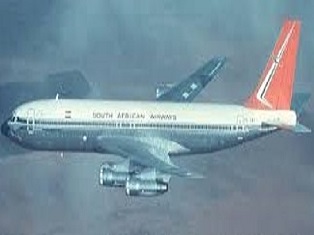
The world’s first commercial aeroplane featured turbojet engines rather than propellers, a bullet-shaped body, a pressurised cabin and square windows. These engines allowed it to fly higher than its competitors, avoid bad weather and increase its speed by up to 50 per cent. Built in 1949, it was commissioned by airlines such as Pan Am, South African Airways, Japan Airlines and Air India. In its first year it flew 30,000 passengers including Queen Elizabeth, taking customers from London to places such as Tokyo, Colombo and Johannesburg. By 1953 Comets were leaving London each week. However, there was a major structural design flaw which became evident after two crashes occurred in 1954.
On flight 781 from Rome, the plane exploded 20 minutes after take-off killing everyone on board. Crash investigators found the recovered bodies all had fractured skulls and ruptured lungs. When a South African airways plane crashed a few months later, the recovered bodies had all suffered similar injuries. Investigators found both accidents were caused by inflight metal fatigue failure, which led to explosive mid-air compression. The square windows were to blame for this – the sharp corners of the windows put the surrounding metal under stress at high altitude. Since the stress was localised to just the corners of each window, it resulted in metal fatigue. This is why round windows are always used in aeroplanes now; the stress is able to flow evenly around the window.
Firestone 500 Tires
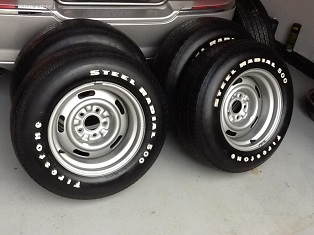
There were over 60 deaths and a hundred serious injuries caused by Firestone 500s across the US, culminating in a recall of millions of tires in 1978. Firestone was a popular tire brand in US prior to the 1970s, however, when radials became available in the American market their sales began to fall behind. In response, they engineered a radial tire but cut corners in order to release it in the shortest amount of time possible. One of the biggest issues in the manufacturing process was the use of incorrect machinery, as the radial-specific equipment was yet to be installed. Over a period of four months the tires passed high speed tests, high mileage tests and overload tests at maximum weight. A couple of years after the tires had been put on the roads, major accidents occurred, caused by tread rubber separating from the brass-plated steel belt at high speeds. While the cause of this separation was never proven, it’s believed the tread wasn’t adhered to the steel belt correctly and water got in, causing the belt to corrode.
Kansas City Hyatt Regency Walkway Collapse
In July 1981, two walkways collapsed at the Hyatt Regency Kansas City hotel killing 114 people and leaving over 200 injured. During its construction the 40-storey building experienced some setbacks, including the collapse of the atrium roof. The lobby was one of the hotel’s defining features, with steel, glass and concrete walkways connecting the second, third and fourth floors from north to south. The walkways had been designed with support beams and tie rods to carry the weight of the people standing on them. However, the design of the fourth-storey walkway had been modified slightly, and the change critically undermined the safety of the structure. On the night of the tragedy, 1600 people were in the lobby for a Tea Dance event. There were approximately 40 people on the second-storey walkway and 16 on the fourth-storey walkway. The connections supporting the ceiling rods holding up the second and fourth-storey walkways failed, causing them to collapse onto the crowded first floor.
Therac-25 Medical Accelerator
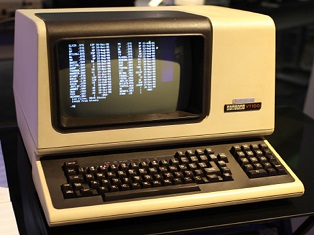
Between 1985 and 1987 six cancer patients were exposed to overdoses of radiation, killing four of them and permanently injuring two. This was caused by a “cancer zapping” machine, which used X-rays to kill cancerous tissues in patients. One of the issues with this machine was that healthy tissue around the tumour was always damaged too, however, it was always hoped the patient would be healed more than they would be harmed. It turned out the machine was only controlled by a computer and there were no hardware interlocks or supervisory circuits to ensure safety. Engineers had also failed to conduct time-analysis and unit testing of the machine. The software developed a bug, which lead to catastrophic events as the wrong dosage was delivered to patients.
Originally the manufacturers denied that such an error was possible, however a technician familiar with the machine ran experiments in his own time to find out what was causing it to malfunction. It was found the same error could happen in the previous model; however the hardware interlocking system would act as an emergency stop. Since this system had been removed in the current model, there was nothing to stop the machine from administering an overdose. The computer had been programmed to have real-time control over the machine. However when the software was placed under scrutiny, it was revealed the source code had been written by only one person who had little experience with coding for real-time systems. The Therac-25’s code had just been based off the code for the two previous models. Both the software engineers and system engineers were at fault for not properly testing the machine and ensuring tight safety measures were in place.
Chernobyl Disaster
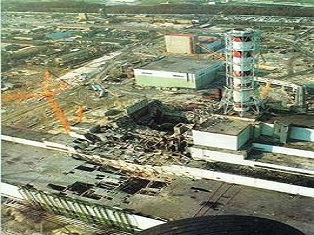
In 1986, workers at the Nuclear Plant were preparing for a one-time shutdown, when they violated safety regulations by disabling the automatic shutdown system and removing most of the control rods, while allowing the reactor to continue running at seven per cent. This caused two large reactions to occur , sending radioactive material into the air. In the four months that followed 28 workers died – some knowingly exposed themselves to the deadly levels of radiation in order to prevent the plant from leaking further. Since the radioactive material affected such a large geographical area, many people were displaced from their homes. Thousands of people died prematurely from cancer because they were exposed to such high levels of the poison.
McDonnell Douglas DC-10
These commercial planes were manufactured from 1970-1989 and designed to compete with the Boeing 747 by operating medium to long haul flights. Over 1000 people were killed in a series of incidents brought about by various engineering errors. Two of these incidents involved faulty locking mechanisms on the cargo door, causing it to be ripped off mid-flight and depressurise the cabin. In another incident, the left pylon and engine separated from the wing just after take-off, which cut several hydraulic lines at the same time. 275 people died in the resulting crash.
Mars Climate Orbiter
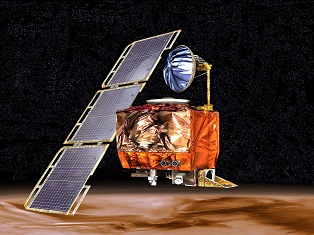
This US $125 million satellite was designed to be the first weather observer on another planet. However, in September 1999, it vanished as it approached Mars, burning up in the atmosphere. NASA reviewed their calculations and realised a conversion error caused the spacecraft to go too close into the Martian atmosphere. The software controlling the satellite’s thrusters calculated the necessary force it needed to exert in pounds. Another piece of software took this calculation and assumed it was in newtons. Unfortunately, the engineers didn’t pick this error up despite the spacecraft making 10 times the amount of adjustments than they expected. It got within 60 kilometres of the Martian surface despite simulations showing anything closer than 85 kilometres would exert enough atmospheric friction to destroy the satellite.
The Millennium Footbridge
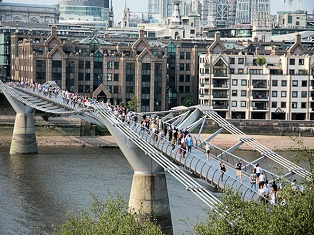
This footbridge was opened in June 2000 to celebrate the new millennium and connected St Paul’s Cathedral with the Tate Modern Gallery. Two days later, it was closed indefinitely as engineers re-worked the structure’s design. The US $26 million bridge showcased a futuristic design with an aluminium deck supported by two Y-shaped frames, rather than overhanging arches. Unfortunately, the bridge was wobbly and even a light breeze made it swing. As pedestrians crossed the bridge, they attempted to keep their balance by walking in time with the swaying to counter the motion. This increased the force of the lateral swinging and the rocking increased. New York engineers stepped in and installed 87 dampers underneath the bridge to act as shock absorbers and decrease the motion, costing a further US $7 million. The bridge was reopened 18 months later.
Tokyo Disneyland Big Thunder Mountain Derailment
One person was killed and 10 injured when the rollercoaster derailed in 2003. The gap between the axel and the bearing on the back wheel exceeded design specifications, causing more vibration than it should have and placed extra pressure on the screw holding the axel in place. As a result, the axel broke and the carriage crashed. The reason for the large gap was a miscalculation in measurements when converting them from imperial to metric – the axel should have been 44.14 millimetres rather than 45 millimetres.
French Trains Too Wide For Platforms
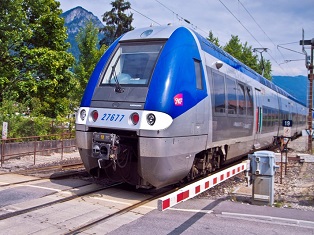
In 2014, French train operator SNCF discovered the brand new trains they had ordered at a cost of €15 billion were too wide for many of their regional platform. The trains had been purchased to fit the measurements of platforms built approximately 30 years ago, without taking into consideration the skinnier platforms built 50 years ago. To solve this problem, the rail operator had to spend upwards of €50 million to reconfigure over 1000 platforms across the country.
Sources:
https://accendoreliability.com/vasa-engineering-disaster/
https://www.wired.com/2009/01/jan-15-1919-morass-of-molasses-mucks-up-boston-2/
http://damfailures.org/case-study/st-francis-dam-california-1928/
http://www.airships.net/blog/british-airship-r101-crashes-killing-48-day-1930/
https://www.forbes.com/sites/startswithabang/2017/05/24/science-busts-the-biggest-myth-ever-about-why-bridges-collapse/#58a74fac1f4c
https://www.history.com/this-day-in-history/tacoma-narrows-bridge-collapses
https://www.engineeringclicks.com/cleveland-east-ohio-gas-explosion-1944/
http://www.news.com.au/travel/travel-advice/flights/the-tragedies-that-changed-the-shape-of-plane-windows-forever/news-story/bc723a15ce58a97d839483bfd0e7ce4a
http://www.wheresmychampagne.com/mcdonnelldouglasdc-10/
http://www.rubbernews.com/article/19960812/ISSUE/308129970/the-14-million-firestone-500-radials-still-on-the-road-the-radial-was-prone-to-belt-separation-and-blowouts-and-contributed-to-61-fatal-auto-accidents-according-to-the-national-highway-traffic-safety-administration-500-tragedy-crushes-firestone
https://www.engineering.com/DesignerEdge/DesignerEdgeArticles/ArticleID/175/Hyatt-Regency-Walkway-Collapse.aspx
https://interestingengineering.com/understanding-hyatt-regency-walkway-collapse
https://hackaday.com/2015/10/26/killed-by-a-machine-the-therac-25/
https://www.livescience.com/39961-chernobyl.html
https://www.britannica.com/event/Chernobyl-disaster
https://www.wired.com/2010/11/1110mars-climate-observer-report/
http://mentalfloss.com/article/18407/embarrassing-moments-engineering-and-what-they-taught-us
http://www.mouseinfo.com/forums/tokyo-disney-resort/13134-olc-space-mountain-accident-report-released.html
https://www.nytimes.com/2003/09/06/us/man-is-killed-in-ride-accident-at-disneyland.html
http://www.bbc.com/news/world-europe-27497727
Mulweli Yolanda Mafukata went from a high school nestled away on a farm, to studying towards a career in engineering in a big city. On the 8th of January 2018, she tweeted an image of herself on-site, wearing a hard hat, high visibility vest, and a pair of robust boots.
Her tweet read: “What a man can do, so can a woman”. It provides the world with a window into the life of a modern South African engineering student. She had been tasked with collecting samples from a coal processing plant - samples that were to be analyzed in a coal laboratory.
Back in 2013 the Engineering Council of South Africa revealed that only 4% of engineers in the country were women. This story is therefore heartening - Mulweli serves as a working example of what South African, school-leaving, female students can aspire to.
The school years
Mulweli’s interest in engineering slowly developed during her secondary education years. She explained: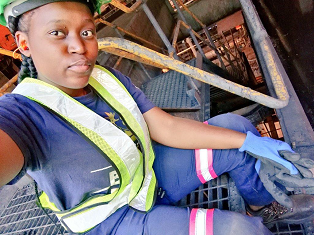
“Like many children in South Africa who are exposed to very few career paths, I wanted to be a medical doctor and save lives as a child. I grew up as a very bright and confident learner through my primary and high school years. I did my high school in a farm boarding school in the outskirts of the Limpopo province. My main subjects were mathematics, physical sciences, agricultural sciences and life sciences.”
During high school, Mulweli discovered that she had an affinity for physical sciences and mathematics, but less of an appetite for biology. That was when she settled on becoming an engineer.
She matriculated in 2013, earning distinctions in all her subjects. She was also the top performer in Agricultural Science in the Limpopo province of South Africa. Exxaro, a South African mining company, awarded her a bursary.
Going to University
She is currently studying towards her Bachelor in Engineering in Chemical Engineering at the University of Pretoria. She is in the fourth year of a five year program. Mulweli believed that this field of engineering would maximize her chances of being employed in the engineering world. She explains:
“One of the main reasons why I chose chemical engineering is because of the flexibility it presents me with. It does not confine me to just one niche or industry. A chemical engineer can find a role in mining, food, medical, environmental, business, banks, and in research industries. I am fascinated with how engineers are able to take something as useless as used cooking oil and use it in the making of biodiesel on a commercial site. Energy is a big interest to a chemical engineer and if we can use what we have to get more energy... I think we are winning then.”
Because of the discipline’s breadth she says it has been a challenging degree. Mulweli says her modules have covered a “bit of electricity, a bit of drawing, mechanics of materials, and a lot of programming”.
She is a shining example of how a previously male-dominated industry in South Africa (and indeed the world) is becoming more gender inclusive. Mulweli believes that without women engineering workplaces would be depriving themselves of great minds and unique ideas that could solve critical engineering problems.
Mulweli thinks that some women are turned off by the ‘hard-hat’ lifestyle that sometimes typifies engineering. She commented:
“Women should be made aware that although there will be some dirty work, an engineer’s job is mostly strategic planning, calculating, solving problems, designing, and optimisation of processes...and also managing people. An engineer is someone who can sit down and solve a problem by just looking at the numbers and applying all the knowledge obtained over the years.”
It is clear that Mulweli is enterprising, but to her great credit, her ambition encompasses a highly developed social conscience too. Mulweli explains:
“My dream is to get to a position where I can use my chemical engineering degree in an entrepreneurial way to make money and to also help other people.”
Dear Colleagues
I must confess I have always imagined engineers and technicians as the rough and tough, Wild West action types (who work out in the field in pioneering conditions), compared to our more dilettante, cultured brothers and sisters in Law, Medicine and the Arts. In a book entitled Does the Engineer Need Culture?, Prof. John Peck from City College, in New York remarked that engineers were “rough, tough spirits” who took “pride in cultivating construction-camp and bar-room manners rather than the deportment that would grace a drawing room”. Robert Noyce, the co-inventor of the integrated circuit, who himself came from the small town of Grinnell, in Iowa, said: “In a small town, when something breaks down, you don’t wait around for a new part because it’s not coming. “You make it yourself.” Interestingly, many of the founders of Silicon Valley came from small rural towns. In the biography; ‘The Tinkerings of Robert Noyce’ when referring to the moon landing of the Apollo project, the author, Tom Wolfe, says: “It was engineers from the supposedly backward and narrow-minded boondocks who provided not only the genius but also the passion and the daring that won the space race . . .”
There is no doubt, however, that some of my engineering colleagues, some of whom are eminently cultured, would be a little piqued at the idea that they are Wild West types. I remember being mildly surprised, when working on commissioning a power station in the middle of the outback, that the grubbiest and seemingly coarsest technician on site ended up hosting a spectacular black tie wine appreciation night. He was the part owner of a famous vineyard with a magnificent art gallery that had hit hard times and he needed to go out and ply his craft again.
And as Kelvin Kemm so aptly remarked:
“Today, to produce iPods, or jets, or cars, or bridges, or whatever, engineers have to possess great sensitivity to style, human emotions, shape, colour and other interacting pieces of a big jigsaw puzzle. And in communicating our ideas, black and white prose doesn't suffice- we need to use panache and style in getting our rather difficult technical messages across in a simple, enjoyable and easy to understand manner.”
So what we need to do in our engineering designs:
• Always remember that in most cases a human being will be taking ownership of your wonderfully designed widget
• Make the design simple using the KISS principle, but add a dash of style
• Learn from other disciplines when executing your engineering designs, such as interior design, psychology, marketing and art, even though at first they may seem to have little relevance
And perhaps we can hark back to the ‘who gives a damn, Wild West’, when applying style to our engineering designs. As Gore Vidal comments:
“Style is knowing who you are, what you want to say and not giving a damn. “
Thanks to Dr Kelvin Kemm for the inspiration to write this article.
yours in engineering learning
Steve
Dear Colleagues
No matter whether you are an electrician operating a one-woman business in the middle of the Great Sandy Desert or a Chief Engineer of the largest car company in the world – you need to have a strategic plan to operate to, so that you can continue to operate successfully as a business. Most people don’t really know what a strategic plan really is.
But these strategic plans are hugely helpful in keeping your enterprise on target in achieving great things.
Not even close to a Strategic Plan
As Graham Kenny in the Harvard Business Review remarked recently (‘Your Strategic Plans Probably Aren’t Strategic, or Even Plans’), most senior level managers often have no idea what a strategic plan really is. Typically examples thrown around for strategic plans include: achieve $50m turnover by next year/communicate better with stakeholders/donate 10% of profits to charity/launch a new engineering support service…and so forth. None of these are strategic plans.
Most people get confused between an objective (what you ‘aim to achieve’), action (‘what do you want to do’) and strategy.
 What is a strategic Plan ?
What is a strategic Plan ?
A strategic plan is simply a way of looking to the future describing what your firm’s goals are, why you exist and (most importantly !) your actions needed to get to these goals by harnessing your unique structure and points of difference. This should then be communicated to all stakeholders (including your customers) so that you can all pull together in executing this strategic plan.
Theoretically, a strategic plan should also contain details of your vision, mission, goals and values. However, I believe that most of these long drawn out descriptions are often never read; let alone acted upon. Ensure that your strategic plan is not another example of ‘me too’ – a turgid summary of something which has no significance and that will not create a flicker of interest or support from anyone else.
A Neat Strategic Plan always focuses on ‘your uniqueness’
I realize sadly that there is nothing new under the sun unfortunately. However, we all are unique in our various ways.
Try and always be innovative in drawing up a strategic plan – what makes you unique and what are your unique selling points ? Why do you exist as an organization ? Do you communicate this to your clients and staff on a regular winning basis ?
Finally, always remember that strategic plans are a work in progress. You never arrive and this plan needs constant adjustment and consultation with others to ensure it stays relevant and useful.
Peter Drucker – the venerable management thinker – made a really good point (something I have to remind myself on a daily basis to avoid) : ‘People in any organization are always attached to the obsolete - the things that should have worked but did not, the things that once were productive and no longer are.’
Yours in engineering learning
Steve
Mackay’s Musings – 10th April’18 #671
A free week-long festival to celebrate young Perth artists kicks off this weekend. Presented by Propel Youth Arts, the Youth Week WA KickstART Festival will feature an extensive range of workshops, performances and exhibitions. These include a sketchbook exhibition, photography, comedy and exploratory music workshops, and poetry slams.
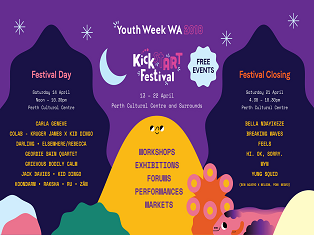
On Saturday 14 April, 10 hours of live music performances by WA acts will be held in the Perth Cultural Centre in Northbridge, along with food trucks, and free workshops and exhibitions. There will also be over fifty market stalls showcasing products from local artists and designers.
This year’s theme is Illuminate – Djoondal Djoomba, which relates to space and time. The Djoondal Djoomba reference comes from the ‘Carers of Everything’ Noongar Dreamtime story. This theme symbolises the bright futures of WA’s youth.
The KickstART Festival is now in its eighth year. It’s supported by the State Government of Western Australia, Lotterywest and the Metropolitan Redevelopment Authority.
Dates: Friday 13 April – Sunday 22 April
Location: Various locations in Northbridge, Elizabeth Quay, Perth and Curtin University.
Industry Presentation: Innovation by Digitalisation – The future of Power Generation and what skills do engineers need to realise it?
Join our distinguished guest speaker Robert Ceic for an insightful presentation at our Perth campus on 24th of May 2018 or follow it online!
To receive more information about this presentation, including online streaming details, please complete the form available on this page.
EIT is committed to delivering education programs that are aligned with real industry needs. We also want you to have ongoing access to relevant information that will make you a better professional and will help you improve the quality of your life and of those around you. As a result, EIT is collaborating closely with industry to bring you relevant guest speakers who can provide meaningful technical insights – an invaluable benefit!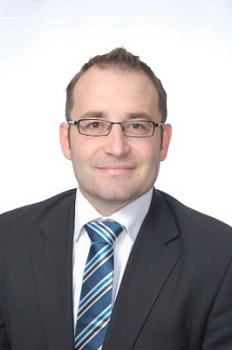
We are honoured to have Robert Ceic as part of EIT’s Distinguished Industry Guest Speaker Program sharing some of the knowledge he has gained over two decades of experience in the power industry.
Robert is Technical Director and Australian Service Line Leader for Power Generation & Renewable Energy at GHD based in Perth. He has the primary corporate responsibility for developing and maintaining GHD’s technical capabilities.
He has over 22 years of experience in the power industry as a contractor and consultant ranging from project development and design through to construction and operation of various types of power generation facilities in Australia, United Kingdom, United States and Indonesia.
Robert is a Chartered Mechanical Engineer with postgraduate qualifications in Management and a Fellow of the Australian Institute of Energy.
The presentation will take place at our Perth Campus (140 Royal Street, East Perth) on Thursday May 24, 2018 at 2:00pm, followed by refreshments and networking opportunities. We encourage you to join us in person for this unique opportunity. We will also stream the presentation online in real time and make the recording available.
The presentation will cover the following aspects:
• Current transformation of the Australian power industry - the shift from fossil fuels to renewable energy sources, changing power networks and the disruptive technological forces that are assisting this transition
• The increasing digitalisation of power generation technologies and processes – big data, virtual reality, IoT, 3D printing
• Evolution! The engineering professional will [have to] "evolve" in order to effectively define future technical solutions.
• Revolution? New technologies will be so disruptive that they are going to revolutionise the way engineering is executed and educated.
To receive more information about this presentation, including online streaming details, please complete the form available on this page.
To find out about EIT’s Distinguished Industry Guest Speaker Program or become a part of it, please contact Mrs Carolina Asenjo (
{uniform form=99/}
The Engineering Institute of Technology will be showcasing our on-campus courses at the Australia Future Unlimited: West Africa Education Exhibition in Nigeria and Ghana later this month. Running from April 17-21, this Austrade event provides a great opportunity for anyone who is interested in our courses to meet our representatives and learn more about studying abroad in Perth, Western Australia.
The Australian government-led exhibition is designed to present higher education study opportunities in Australia. The Department of Home Affairs will be present to provide assistance with the student visa application process.
As a CRICOS provider, international students are able to apply to study with us on a student visa. Our higher education qualifications are designed to be job-oriented with a focus on practical knowledge, so students graduate with skills which can be directly applied in the workplace.
We currently offer the following courses on-campus:
• Bachelor of Science (Electrical Engineering)
• Bachelor of Science (Mechanical Engineering)
• Bachelor of Science (Civil and Structural Engineering)
• Bachelor of Science (Industrial Automation Engineering)
• Master of Engineering (Industrial Automation)
This event gives students the perfect chance to ask any questions they have about studying with us before our next intake in June 2018. Registration for the events in Nigeria and Ghana is free.
Do you need work as a Control and Instrument Technician, Maintenance Electrician or Mechanical Technician? Z-Tech Control Systems is a UK company that provides engineering solutions for Water Utilities, Power, and Rail. They know first-hand the high quality of EIT’s students and graduates and are currently looking for talented individuals to join their team.
The skill sets in demand include:
Control and Instrument Technician
· Time served apprenticeship supported by a minimum level 3 formal qualification. E.g. City and Guilds, BTEC, ONC/HNC/HND/Australian/New Zealand Qualifications or equivalent
· Experience of process control and electrical systems
· Experience working with and understanding PLCs to include management and certain programming
· Knowledge working with communication protocols
· Experience in calibration and maintenance of frontline instrumentation and a good understanding of relay logic as well as the ability to maintain and repair
Maintenance Electrician
· Time served apprenticeship supported by a minimum level 3 formal qualification. E.g. City and Guilds, BTEC, ONC/HNC/HND/Australian/New Zealand Qualifications or equivalent
· 17th edition BS7671 Electrical Wiring Regulations
· A minimum of 3 years post-apprenticeship experience of industrial electrical testing maintenance and installation such as motors, circuits, distribution, etc.
Mechanical Technician
· Time served apprenticeship supported by a minimum level 3 formal qualification. E.g. City and Guilds, BTEC, ONC/HNC/HND/Australian/New Zealand Qualifications or equivalent
· A minimum of 3 years post-apprenticeship experience in all aspects of industrial mechanical tasks
All expressions of interest are assessed by Z-Tech’s Technical Engineering Team. Applicants should have the right to work in the UK to be considered.
EIT is not part of the decision-making process and is acting as a communicator of this opportunity for our students and graduates.
If you are interested, please contact Mrs Carolina Asenjo by email (
Dear Colleagues
I clearly remember when computing started taking off, about the wry remark referring to garbage in, garbage out. This referred to a marvelous computer program developed at huge cost being fed absolutely useless data and thus spitting out useless information it had derived from the data. This is even more true today with the advent of machine learning and the internet of things (IoT). Imagine training your computer program in a machine learning application with shoddy data. The results could be catastrophic. And this is indeed what is happening today. In the frantic rush to write the best programs to predict outcomes, we often lose sight of the desperate need to ensure our data is valid and reasonable. I have some feeling for this challenge – as I have just completed a course on machine learning. 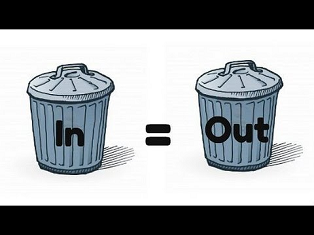
This problem will definitely impact on you as an engineering professional and it is worth looking at a few tips in handling this problem.
Tuning a plant process has the same challenges
Some of you may recall the agonies of tuning a plant with highly sophisticated programs to ensure that your P, I (and perhaps D) parameters were absolutely perfect. In fact, the operator would often spend a huge amount of time in tuning a loop and neglect the most important element in the whole process which was of course the instrument (e.g. flow meter) - which could be spitting out poor quality data to the loop controller (which then goes onto control a valve in a totally wrong fashion).
Machine Learning Is the New Kid on the Block
What is happening now – particularly in commercial organisations is the advent of machine learning applications. All these effectively represent are programs that learn how to predict a particular outcome based around (training) data in the past that they have learnt from.
One gathers good quality data - for example, parameters about the operation of a piece of equipment e.g. a compressor and also data on when it requires maintenance (the parameter we are trying to predict). One trains up the program with this data and then uses it in future to predict possible failures before they occur. The vibration gurus would laugh at this application of machine learning and exclaim that they have been doing it for decades. Absolutely right. There is nothing new under the sun !
Machine Learning is Gathering Steam
However, these applications are steadily gathering steam because of the ability to gather data (IoT), powerfully cheap computing power and the interconnectedness of everything. The problem comes in that much of the data that is being gathered is poor quality and thus it impacts on the machine learning application. Garbage in to garbage out.
Reasons for poor quality data are myriad and range from it being incorrectly gathered (sampling wrong/biased/calibration wrong) and simply human error. Other examples of poor data are handwritten notes, badly labeled data and incorrect interpretations of variables.
A Few Tips In Ensuring your Data is Useful
A few suggestions on dealing with this problem:
Ensure your objectives match up with the data you are gathering. For example, ensure the right sensors are gathering the correct data to predict a particular machine’s failure.
Build in oodles of time to clean the data and to check its integrity before you even consider processing it in a software machine learning application. You will find the time to clean the data may take up 80% of the overall time for the project. You may find you have sampled the data at the incorrect sampling frequency or to the wrong level of accuracy or there are some strange biases in the signal which need to be fixed before it is usable.
Keep an Audit Trail. Keep all your data backed up. Even the raw preliminary data. Show clearly how you have processed it into a usable format. You may find you need to go back due to some unexpected problems with your machine learning application and find out why a particular sensor reported values the way it did.
Make one Person Responsible for the data – its processing and subsequent use. This is your go-to person when there are anomalies detected or unusual results predicted with your machine learning application. This individual would know the data and the process backwards.
Independent Review. If you are handling a particularly big project – it is definitely worthwhile getting an independent expert to review the entire process of gathering data/processing/cleaning it and then applying it to a machine learning application. They may find issues you didn’t think of. Also get your operators and users of the program connected to the programming geeks and developers of the program. They may have some highly experienced insights in running the plant which you are trying to predict its performance with your machine learning application.
Conclusion
Machine learning has huge power but it should always be grounded in a common sense approach. And as a good friend of mine remarked so wisely: Common sense ain’t so common around here.
My appreciation to Thomas C.Redman of Harvard Business Review for a great article entitled: If Your Data Is Bad, Your Machine Learning Tools Are Useless. I have applied it to my experiences in process control and industrial automation and to my new passion of machine learning.
Yours in engineering learning
Steve
Mackay’s Musings – 3rd April’18 #670
125, 273 readers – www.idc-online.com/blogs/
Bruce Scallan is a Facilities Manager at Reutech Communications. The company specialises in technologically advanced secure military communications systems. In South Africa, Reutech’s parent company, Reunert Limited (a Johannesburg Stock Exchange listed company) has been a key supplier of equipment to the South African National Defence Force for 47 years. 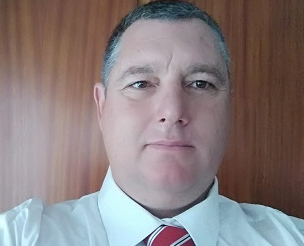
Scallan has four core responsibilities as the Facilities Manager:
● Management of plant maintenance, utilities, and support services.
● Management of security
● Management of the health and safety program.
● Management of the environment program.
Managing the facility is no easy feat. Scallan is involved from the ground-level of the organization right up to the executive level. He is involved with reporting, projects, financial planning, and risk management.
One aspect of his work that he finds particularly interesting involves the Environment Test Chambers – they are responsible for the thermal cycling tests on the military-tier radios.
Scallan’s focus is on the refrigeration systems of the Environment Test Chambers. The thermal cycling tests perform temperature “shock testing” on the radios, exposing them to alternating temperatures. He is currently designing a new test chamber for Reutech Communications for the purpose of testing their high frequency radios.
“I mainly use two stage cascade systems which produce ultra-low temperatures from around minus 40 to minus 85 degrees Celsius. These systems are two stage refrigeration systems each running on different refrigerants and are inter-thermodynamically linked. Therefore, we can cascade down to lower the temperatures.”

New technologies entering the market, Scallan says, are aimed at lowering the impact on the environment, with global warming in mind. And an added benefit with the newer technology is that it runs with more energy efficiency. Another challenge is changing operations to utilize more natural refrigerants – a better scenario for the environment.
Vocational training
Bruce Scallan has a desire to impart his knowledge to the next generation of engineering professionals. After completing his Professional Certificate of HVAC at the Engineering Institute of Technology (EIT) he was inspired. He began to dream of opening a technical vocational training center of his own. He explains:
“The training center will offer vocational training for students wanting to begin a career in refrigeration and air-conditioning, or will offer current apprentices and technicians the opportunity to improve their skill sets in the field. I feel strongly that vocational training can play a very important role in the education sector by providing tangible skills in the workplace that can be used from the word go.”
He is particularly passionate about growing this venture in South Africa. He feels that training institutions in his country often lack the resources to produce large numbers of skilled graduates. He is an ardent supporter of vocational training believing it builds relevant skills which are immediately useful in the workplace.
Cognizant of the demanding schedules of technicians and engineers who are actively working, Scallan believes he needs to model his training center around the principles of online education. He would like to provide people with the opportunity to become skilled, or indeed broaden existing skills, whilst working. He knows this is challenging, but also realizes that it is nigh impossible for most people to forego work and their salaries while they study and up-skill.
In fact Bruce is all too familiar with this juggling act! Having completed the part time, online HVAC Professional Certificate, he enrolled in EIT’s Advanced Diploma in Plant Engineering and their Professional Certificate of Project Management. He is completing these programs while working full time and raising a young family.
He says this about EIT’s approach to online learning:
“I strongly believe EIT’s learning model is going to revolutionize and pioneer the way Engineering can be taught around the world. EIT uses a very user-friendly and interactive system garnished with the best instructors around the globe to present the courses.”
And Bruce refuses to be daunted and is certainly not prepared to rest on his laurels: he has every intention of enrolling in EIT’s Bachelor of Science in Mechanical Engineering, after which he looks forward to acquiring a Master Degree.

In support of Global Day of the Engineer , we are celebrating the positive impact engineers have had on our world as we know it. Engineers aren’t just responsible for building giant skyscrapers or inventing cutting-edge technology – without engineering there would be no civilisations or infrastructure, agriculture, vehicles, tools or technology.
At a very basic level, engineers combine principles of maths and science to solve problems by adapting natural resources to suit our needs. Levers, pulleys, wheels, wedges and the inclined plane were some of the first tools invented, with the aim of decreasing the effort required to lift and transport heavy loads. Engineers first emerged in ancient times, building cities, complex water systems, walls, temples and pyramids – the first engineer known by name is Imhotep, builder of the Step Pyramid in Saqqara, Egypt in approximately 2550 BC.
Since then, the profession of engineering has advanced significantly. The original core disciplines of civil, mechanical, chemical and electrical have been complemented by newer fields such as software, computer, nanotechnology, molecular and mechatronics. These disciplines work hand-in-hand to ensure our everyday life continues to run smoothly, in ways most people would take for granted on a daily basis.
Civil engineering makes the existence of infrastructure possible. Without it buildings, roads, bridges, canals, tunnels, water systems, dams and railways would cease to exist. This would leave us exposed to the elements, with no structures to protect us from wind, rain, sun and extreme temperatures. Travelling would be virtually impossible without roads, railroads, airports, bridges, tunnels and canals. Living near a clean freshwater source would be imperative for survival, as there would be no pipes to transport water. Illness would be much more prevalent, as sewage systems wouldn’t exist.
Mechanical engineering has given us vehicles such as cars, trains, aeroplanes, ships and space crafts, which enable us to explore the world and the universe around us. Without mechanical engineers, we wouldn’t even have bicycles, so we’d have to travel everywhere on foot. It would also be impossible to manufacture anything, as factories wouldn’t exist. The only means of cooking would be on a natural open-fire, lit by stones and built solely out of wood. There would be no medical technology, such as X-rays and CT scanners, let alone life-support machines and mechanical limbs or organs. Every machine you can think of would never have been invented without mechanical engineers.
Without electrical engineers, there would be no knowledge of how to convert natural resources into electrical energy, so we would live in a world without power. Environmental engineers ensure compliance with environmental law and aid in the clean-up of hazardous waste, which keeps us and our planet safe. Computers, their software and computer games wouldn’t exist without computer and software engineers.
Humans have achieved amazing things such as space exploration, the discovery of new particles, and the creation of advanced biomedical technologies, self-driving vehicles, virtual reality and 3D printing. Without engineers, our world today would not be possible.
Sources:
https://www.manufacturing.net/blog/2014/02/what-world-would-be-if-engineering-didnt-exist
https://www.britannica.com/technology/engineering
International Space Station
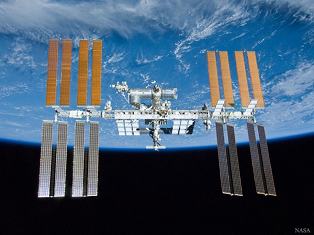
First launched into space in 1998, NASA’s International Space Station (ISS) is an engineering marvel. Costing close to US $100 billion, its construction required over 100 rocket and shuttle launches, plus 160 space walks, and the components were not all in place until 2011. Russia, the US, Canada, the European Space Agency and Japan all contributed, in what became a new collaborative approach to space exploration. The ISS is larger than a six-bedroom house and its systems are controlled by 52 computers – 3.3 million lines of software code on the ground support the 1.8 million lines of flight software code. Covering the area of a football field, the spacecraft is made up of living quarters, laboratories and robotic arms, and each module is connected by nodes. It is so large it can be seen with the naked eye from earth.
The main purpose of the station is to conduct research that cannot be explored anywhere else, such as the effects of microgravity on the human body and investigating the universe surrounding us. The robotic arms assisted in building the spacecraft module by module, after it had been launched, and they help astronauts go on spacewalks. The station gets its power from solar arrays attached to the edges of the craft. The spacecraft was first boarded by three astronauts in 2000. The ISS is now home to six permanent astronauts who live in orbit for four-six months each year.
The Mars Opportunity Rover

NASA’s Opportunity Rover has been exploring Mars since 2004, despite originally being launched with the purpose of fulfilling a 90-day mission. This project was originally green-lit in 2000, so the rover was designed with seven instruments, including cameras, a miniature thermal emission spectrometer, magnets, a rock abrasion tool, a microscopic imager and an alpha particle X-ray spectrometer. These tools are designed to allow the rover to investigate the terrain and air compositions, and send this data back to scientists. The fact that Opportunity is now in its 15th year of exploring Mars is amazing in itself – given it’s now the longest living robot on another planet. Opportunity and its twin Spirit were originally sent to opposite sides of Mars to explore the terrain and search for signs of past water and potential habitats, in case Mars was once like Earth. Since then, Opportunity has roved for 45 kilometres and sent more than 250,000 images back to earth. This mission has helped scientists collect evidence of ancient, habitable environments on Mars, to give them a better understanding of the planet.
The Mars Curiosity Rover and Sky Crane
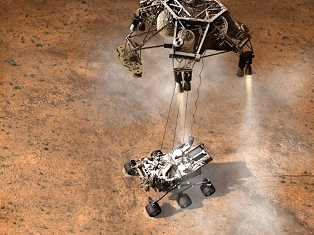
In 2012, Curiosity successfully landed on Mars with the intention of exploring the planet’s habitability on a long-term mission. This was the most sophisticated interplanetary probe ever created, with more than 7,000 scientists and engineers involved in its construction. One of the most challenging aspects of its launch was finding a place to have it land – the other rovers were secured inside a bag, which was inflated upon launch to protect the machines upon landing. Curiosity is five times the size of Opportunity, and a bag that big would have been torn apart during descent. In a marathon brainstorming session, scientists and engineers settled on the idea of creating Sky Crane to hover above Mars and lower curiosity down via a cable.
Fitted with the most advanced suite of scientific tools ever sent to Mars, Curiosity is using its built-in laboratory to analyse the composition of rocks and soil in the hopes of detecting chemical evidence of life, such as carbon. In a sample collected from its first drill, it found elements of sulphur, nitrogen, hydrogen, oxygen, phosphorus and carbon, which could potentially support life. Curiosity is also exploring Mars’ environment, including its weather and radiation emissions.
Chandra X-Ray Observatory

One of NASA’s “Great Observatories,” the Chandra X-Ray Observatory was first launched in 1999. Its purpose is to produce full-colour images of objects which are emitting X-ray light, so scientists can develop a better understanding of our universe. In 2007, the telescope monitored a galaxy 240 million light years away and helped astronomers realise the galaxy contained a type of exploding star which they had never seen before. The Chandra X-Ray Observatory circles the earth every two-and-a-half days; its elliptical orbit allows it to travel up to 140,000 kilometres away. It primarily focuses on collecting data about black holes, supernovae, starburst galaxies and exotic objects far from earth. It also has the capability to study foreign objects that cross its path spontaneously.
It has four pairs of mirrors which run perpendicular to the path of incoming light. As the light hits the top mirror in each pair, it filters down to the secondary mirrors, because two bounces are required before an X-Ray comes into focus. The X-Ray the travels down an eight-metre-long tube towards the telescopes scientific instruments, where the information is then sent back to earth to be analysed by scientists. The Chandra X-ray Observatory also contains devices called gratings, which can be used to filter the light and determine an object’s density, temperature, as well as its motion towards or away from the telescope.
Large Hadron Collider
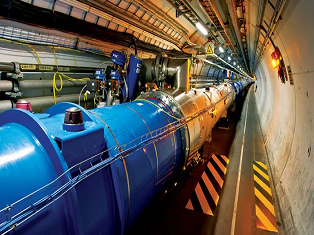
The world’s largest and most powerful particle accelerator was first used in 2008, despite scientists at CERN developing the concept for over two decades. It consists of a 27 kilometre circumference made of superconducting magnets, designed to accelerate the energy of particles as they pass through. It reuses the underground tunnel built for CERN’s previous large accelerator, Large Electron-Positron Collider, which was dismantled in 2000. This is for environmental reasons, such as minimal disruption to the landscape and using the earth’s crust as protection from radiation, as well as economic reasons; it’s more cost-effective than finding enough above-ground space to accommodate the machine.
This machine’s purpose is to help scientists discover more about the universe by smashing subatomic particles together at almost the speed of light. This will allow them to confirm the existence of particles they’ve predicted, discover new ones, and possibly create microscopic black holes. For example, the Large Hadron Collider led to the discovery of the Higgs boson, the final missing piece of Standard Model physics. Scientists are hoping this machine will help them discover how many dimensions there actually are.
3D Printing
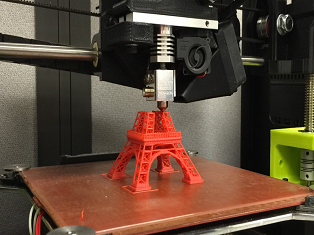
This technology was first developed in the mid-1980s; however, since then it has seen much advancement. At a very basic level, the process begins with the designing of an object via computer software to the correct dimensions. Spools of filament are fed into the 3D printer and turned into plastic; the object is then built layer-by-layer in a process known as additive manufacturing. However, many industrial-grade printers can use materials other than plastic – such as ceramic, brass and steel.
There are endless opportunities as this technology continues to develop, and its availability becomes more widespread. When the concept of 3D printing first came about, it was known as rapid prototyping because it was just used to make creating models easier for engineers. Now we have the ability to construct buildings, machines and furniture with one of these printers. Scientists are now looking into ways to engineer intricate food delicacies. There’s also the opportunity to generate biomaterials for the creation of organs and other body parts, something that would revolutionise the medical world. There are a few limitations to the technology, however. For example, the printer’s size determines the object’s size: you cannot manufacture a house using a regular sized printer. Additive manufacturing is also an incredibly slow process, which means mass production is not yet viable. The cost of these printers and the materials is incredibly high, and it’s currently impossible to achieve the same finish as an industrial machine would.
CT Scanners
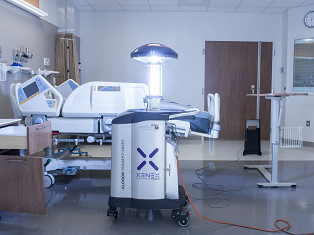
Computed Tomography is traditionally the process of using X-Rays to examine a specific part of the human body. Invented in 1972, this machine works by pin-pointing the area to be examined with a narrow X-ray beam, which is quickly rotated around the body to generate a cross-sectional image of the human body. These images, known as “slices,” are far more detailed than that of an X-ray. Once a number of successive images have been taken, the slices can be put together to form a 3D image of the human body. When the machine was first invented, taking these images was a slow process, one slice at a time. The newest machines can record up to 640 slices at a time; however it’s more common for machines to record between four and 320.
However, technological advancements have allowed this machine to be used for much more than the medical field. Industrial Computed Tomography allows engineers to capture the precise dimensions of external and internal structures, without destroying them. This opens the door for reverse engineering in a manufacturing setting: this process determines the measurements of an existing object to allow for mass production. It also allows for easier management of quality control, determining material posterity and ensuring internal contact points are made during assembly. There are still limitations, such as the cost and size of these machines, however this technology has the potential to change the engineering world.
LightStrike Germ-Zapping Robot
In 2010, the LightStrike was launched commercially to combat the spread of hospital acquired infections, as studies showed this was a leading cause of death in the US and throughout the world. This robot uses pulsed xenon lamps to produce flashes of germicidal UV light which destroys bugs in hard to clean places. The high-intensity UV light penetrates the cell walls of micro-organisms and fuses their DNA to kill them without making physical contact. Different pathogens die at different wavelengths, so this machine can be programmed to combat specific diseases: such as, the pathogens most commonly associated with hospital acquired infections, Ebola, Anthrax, HIV, and other communicable diseases. The disinfection cycle runs for approximately five minutes and the robot can clean 64 rooms per day without overheating. The UV-C light it emitted is highly dangerous for humans; however the light cannot travel through walls and glass, so it’s only harmful to humans who are in the room while it’s operating. As a safety measure, the robot is fitted with heat and movement sensors to automatically turn off if a human enters the room.
Bladeless Wind Turbines
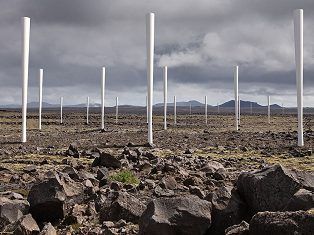
Wind is a major contributor to the generation of renewable energy, and reliance on it will only increase as fossil fuels continue to deplete. The most common way to harvest this resource is via wind turbines, which convert wind energy into electrical energy, as the movement of the blades fuel an electricity generator. The top-heavy nature of these machines means high-quality components are required for the blades to decrease the risk of structural damage. Therefore, the cost of producing traditional wind turbines is high.
A Spanish engineering start-up has developed bladeless turbines, which harness the vorticity of air. When wind passes through the cylindrical wind turbines, it becomes a spinning vortex which exerts force onto the cylinder and causes it to vibrate. The kinetic energy created by this cylinder is then converted into electricity via a linear generator. The lightweight design doesn’t have any gears or bearings, and it can produce electricity for approximately 40 per cent less than traditional wind turbines. It’s also less of a danger to birds flying near it. Currently, bladeless turbines are not as effective at generating electricity as traditional turbines; however, with time these machines will be adapted to increase their efficiency.
Sources:
http://www.washingtonpost.com/wp-srv/special/national/nasa-iss/
https://www.nasa.gov/feature/facts-and-figures
http://www.spacesafetymagazine.com/space-exploration/international-space-station/international-space-station-15-years-groundbreaking-achievements/
https://www.nasa.gov/audience/forstudents/5-8/features/nasa-knows/what-is-the-iss-58.html
https://www.nasa.gov/mission_pages/mer/overview/index.html
http://www.planetary.org/explore/space-topics/space-missions/mer-updates/2018/01-mer-update-opportunity-completes-14-years-of-exploring.html
https://www.space.com/17963-mars-curiosity.html
https://www.theguardian.com/science/2013/jul/28/curiosity-rover-descent-mars-nasa
http://www.wired.co.uk/article/large-hadron-collider-explained
http://cds.cern.ch/record/2255762/files/CERN-Brochure-2017-002-Eng.pdf
https://home.cern/topics/large-hadron-collider
https://www.space.com/26612-nasa-chandra-xray-observatory-15-years.html
https://www.airspacemag.com/how-things-work/how-things-work-chandra-x-ray-23580481/?all
https://www.britannica.com/topic/Chandra-X-Ray-Observatory
https://www.independent.co.uk/life-style/gadgets-and-tech/features/3d-printing-for-dummies-how-do-3d-printers-work-8668937.html
http://theconversation.com/explainer-what-is-3d-printing-and-whats-it-for-9456
https://www.nibib.nih.gov/science-education/science-topics/computed-tomography-ct
http://www.digitaleng.news/de/ct-scanning-a-new-way-to-look-at-parts/
https://www.allaboutcircuits.com/news/germ-zapping-robot-aims-to-make-hospitals-cleaner-and-safer/
http://sweetcrudereports.com/2018/01/08/wind-energy-innovations-bladeless-wind-turbines/
http://www.offshorewindindustry.com/news/vertical-bladeless-wind-turbines-future-wind
E-commerce: the buying and selling of items over the internet. People around the world are using this purchasing platform at a rate that individual companies can barely keep up with. Thankfully there are a host of companies who specialize in transportation and logistics. Even so, to adequately cope, these companies need to automate their technologies, including the heavy lifting, so that they can spend real manpower on customers.
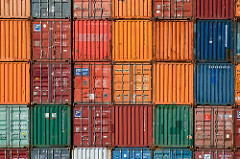
Most people embracing E-commerce don’t consider the immense engineering challenges that it presents.
Through continued innovation and automation, products are transported ever more efficiently and expeditiously. An item purchased by a customer often sees a warehouse, a shipping container, and two delivery and logistics companies, before reaching its destination.
Automated ports
The ports around the world, handling an increasing number of shipments, are investing in automation engineers as they increasingly mechanize their processes.
Container automation has become a focus for logistics companies in the last five years. One of the world’s first fully automated container terminals is in Qingdao, eastern China. The system can unload 1,785 containers in 9 hours.
The plant recently made a new world record for average crane moves per hour; it performed 39.6 moves in one hour. There are no lunch breaks for an automated crane operator! An automated port is able to achieve 30 percent more productivity than a fully manned container terminal.
The United States is also automating container terminals; the Port of Los Angeles’ TraPac terminal employs automated cargo-haulers and automated stacking cranes. The port is one of the very first in the US to be experimenting with automated technology.
Norway is also pioneering automation in the logistics space – it is engineering the world’s first automated container ship. The ship, the ‘Yara Birkeland’ is set to be released this year.
From port to portables
XPO Logistics is the fastest growing Fortune 500 company specializing in transport and logistics. It spends close to US$500 million on developing new technologies for the industry every year.
The company understands that delivery efficiency is the key.
CEO of XPO Logistics, Brad Jacobs, says that the 750 warehouses that the company owns have become high-tech hubs. Robots do the heavy lifting, drones take the inventory, the staff use internet-connected wearables. In general automation replaces humans in the more repetitive tasks. Speaking to Fortune, he said:
“We’re actually the largest manager of expedited shipments in the world. These are critical, urgent, unplanned shipments that have to be delivered right away. Usually they are picked up in 45 minutes and delivered in a couple of hours and we usually do that by truck, we also do it by plane, we also do it cross-continentally.”
The company has just introduced a new warehouse management system, optimized for mobile devices: WMx technology. It is a cloud-based system which ensures efficient internal communication – personnel merely log in to locate specific information.
As the industry heats up, companies like Uber are trying to enter the freight business as well. They’re trying to mobilize drivers to deliver items around their cities, suburbs and towns.
In fact E-commerce is available to anyone willing to service the eager, paying customers in all corners of the world. The competition is fierce, however, and efficiency is king, but with automation expertise gathering steam the deftness and speed of delivery is almost poised to defy logic.
Works Cited
“U.S. Ports Take Baby Steps in Automation as Rest of the World Sprints.” Fortune, fortune.com/2018/01/30/port-automation-robots-container-ships/.
“World's Most Efficient Fully-Automated Port in E China.” YouTube, 3 Dec. 2017, youtu.be/4AF9aIgUj3Q.
March 2018 will go down in history as a tough month for autonomous and electric vehicle engineers.
Self-driving cars and the engineering technologies that power them are being heavily criticized due to a spate of high profile failures and the dangers of introducing job-threatening ideologies into the modern world.
A self-driving Uber SUV in Tempe, Arizona, struck and killed a pedestrian on the evening of March 18th, 2018. The Volvo XC90 was in the autonomous mode at the time of the accident. This is despite Uber using ‘safety drivers’ to guard against accidents.
Public opinion is divided over what or who to blame: the self-driving technology or the safety driver (who was not paying attention to the road at the time of the crash)? According to the exterior and interior cameras in the self-driving SUV, however, it is clear that the car’s technology would have been unable to prevent the crash.
(Tesla’s autopilot mode has also caused accidents before, one being fatal.)
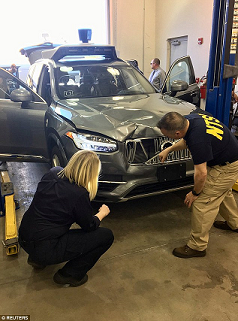
As a result of the SUV crash Uber removed all of its self-driving vehicles from Arizonian roads. (Uber had also been hiring drivers with criminal records; they have changed that strategy too).
Toyota also halted self-driving car tests after news broke of the Uber accident. Toyota, like Tesla Motors, has a driver-assisting technology; the technologies are somewhat different to the fully autonomous methods used in Uber’s case.
Despite the tragedies Toyota is launching a US$2.8 billion company to continue developing the self-driving technologies.
Self-driving cars are being viewed with heightened skepticism, understandably, but then so too are the renewable technologies that are powering the electric vehicles of the present and future.
Electric Vehicles in the firing line
A Tesla Model X was involved in a crash on the 23rd of March 2018. The Model X crashed into a median barrier on Highway 101 in Mountain View, California (Silicon Valley). The car burst into flames. Whether or not the autopilot function had been enabled is beside the point - the flames were reportedly coming from the battery.
NBC’s Bay Area twitter account tweeted: “A Good Samaritan at the scene of the Tesla Model X car crash described the car to be “actively emitting full flames from the battery bank.”
It is suspected that when an electric vehicle (EV) crashes the threat of a fire starting on impact is real. The battery banks on a Tesla Model X’s are made up of 7,000 cells. If the cells catch fire, they can burn at 900 degrees Fahrenheit (482 degrees Celsius).
However, Elon Musk’s Tesla Motors has defended itself: with indications that lithium-ion powered vehicles could catch fire they are still 5 times less likely to catch fire in crashes when compared to gas-powered vehicles. Nonetheless, at the scene of the crash firefighters and Tesla technicians worked together to figure out how to effectively douse the fire. It was an interesting meeting of minds: firefighter and technician.
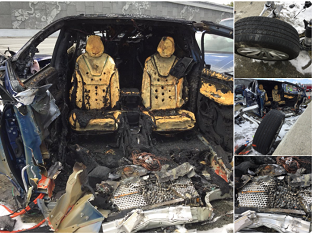
The concern is that police and emergency services are not equipped to handle situations caused by newer technologies they do not yet understand. EV technology has been challenging engineers and technicians for some time, but now emergency service personnel are on a sharp learning curve too.
Autonomous vehicles and EVs have come a long way, but ultimately safety is paramount. It is, however, also worth reflecting on the turbulent history of the driver-dependent, gas-powered vehicle.
Works Cited
“Arizona Puts Brakes on Uber Self-Driving Car Tests.” Phys.org - News and Articles on Science and Technology, phys.org/news/2018-03-arizona-uber-self-driving-car.html.
Fingas, Jon. “Tesla Model X Driver Dies in Mountain View Crash.” Engadget, 26 Mar. 2018, www.engadget.com/2018/03/24/tesla-model-x-driver-dies-in-mountain-view-crash/.
Modern dam engineers in Africa could inadvertently trigger a water war in Africa.
It all started when Egypt was distracted by a governmental crisis - the Arab Spring Uprising was consuming most of the attention of the tenuously positioned Egyptian Government. At this juncture the Ethiopian government mobilized its dam engineers to begin work on a project to create hydro power.
So began a hydro-politics disagreement that Egypt says may lead to a war.
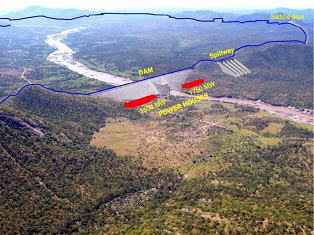
The Ethiopian project involves damming one of Africa’s greatest sources of water; the River Nile. By harnessing this river the Kingdoms of Egypt, Ancient and New, were enabled. And modern Egypt is still very reliant on its water. Ethiopia’s industrialization and modernization, however, continues, and as it does, there is a growing demand for electricity. The government plans to have this source of power as part of their future energy mix.
More than 80% of Egypt’s water is provided by the Blue Nile which flows from Ethiopia. The proposed Grand Ethiopian Renaissance Dam (GERD), destined to be filled by water from the Blue Nile, may impact on Egypt.
The dam has been under construction since 2011. The entire project will cost Ethiopia US$5 billion - roughly 15% of the country’s GDP as recorded in 2012 (and 60% of its annual budget).
Egypt is rightly concerned that their water source may be disrupted by the GERD. The success of agriculture in Egypt is still dependent on the Nile, as it was in ancient times. If their scant rainfall levels drop and the filling of the dam begins Egypt could run dry.
Upon its completion, the GERD will be the biggest dam in Africa. It will be 1,800 meters long, 155 meters high, and will hold 74 billion liters of water. The project, as of 5 months ago, was 60% completed. It is expected to be operating by the end of 2018.
Ethiopian sources say the hydro power setup (including 16 hydroelectric turbines) will neither divert nor disrupt the water that is Egypt-bound. Experts, on the other hand, are worried that when the dam begins filling it could cut off Egypt’s water supply for a full year; unless, of course, it is filled very slowly indeed.
The middleman and the naysayers
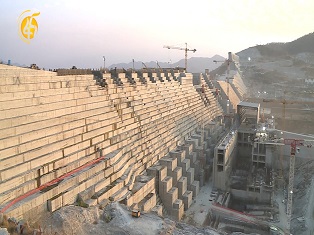
The African country right in the middle (figuratively and literally) of the Ethiopian and Egyptian water dispute, is Sudan.
Sudan is siding with Ethiopia. The benefits for them include a potential strengthening of their already strong agricultural output and they hope to share in the electricity generated by the turbines at the GERD. Being outnumbered two to one Egypt would struggle to prevent the completion of the GERD.
Resources Ministers from the three African countries have been engaged in talks to settle concerns, but to no avail. Egypt has appealed to the UN Security Council to intervene, but the matter has again been referred to the leadership of the countries involved.
BBC News spoke to Osama Daoud Abdellatif, head of the DAL Group, a group that operates farms and irrigation setups in Sudan. He said:
“For Sudan, it’s wonderful. It’s the best thing that’s happened for a long time and I think the combination of energy and regular water levels is a great blessing.”
Engineering professionals, however, warn that the estimated figures published around the impact of the GERD on electricity output may be a little off. Asfaw Beyene, a Professor of Mechanical Engineering at San Diego State University, speaking to International Rivers said:
“More than half of the turbines will be rarely used. GERD’s available power output, based on the average of river flow throughout the year and the dam height, is about 2,000 megawatts, not 6,000. There is little doubt that the system has been designed for a peak flow rate that only happens during the 2-3 months of the rainy season. Targeting near peak or peak flow rate makes no economic sense.”
Works Cited
“The 'Water War' Brewing over the New River Nile Dam.” BBC News, BBC, 24 Feb. 2018, www.bbc.com/news/world-africa-43170408.
“The Grand Ethiopian Renaissance Dam Fact Sheet.” International Rivers, www.internationalrivers.org/resources/the-grand-ethiopian-renaissance-dam-fact-sheet-8213.
Blog - Steve Mackay
EIT's Technical Director, Steve Mackay, enjoys keeping his blog up-to-date with useful tips and current industry matters for his fellow colleagues. He has a loyal and expanding following base reaching over 300,000 people around the world.
Student Stories
In this section you have the opportunity to read and listen to EIT students talking about the reality of the programs. Discussions are wide-ranging and include information about the study commitment required, the value of the qualification in their careers, the relevance of the subject matter, future pathways, and more. They provide valuable feedback for you to take into account before you decide to join one of our programs.
Career Information
Latest career information including industry research, podcasts, blogs, life hacks and general information about how you can make the most out of your career.
Education
Here you will find out more about the latest trends and developments within education worldwide, along with some helpful articles regarding study tips and keeping on track with your studies.
Developments
The latest innovation and inventions from the world of engineering can be found here. Learn about advances in technology and how they can make a real difference within your industry.
Announcements
Keep up to date with the latest announcements from the Engineering Institute of Technology. In this section you can read more about new courses, new recognition from professional bodies, our Excellence in Teaching Award, upcoming free webinars and much more.
Monthly Update
We understand that you may not have time to read all the articles that we post, so our monthly update gives you access to some fascinating articles which cover the best of the months news in a compact format.

